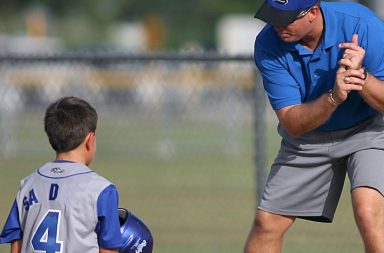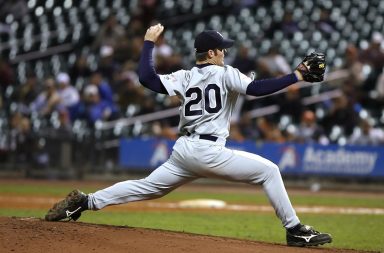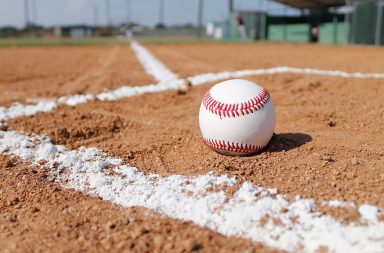Top 6 After Game Party Ideas for Your Little Leaguers
People that have kids in little league are always interested in allowing the kids to have fun after the game, or after the last game of the season. They are constantly trying to think of new ways to make sure that they have fun.
When people need to throw an after game party for little leaguers, they may need to get some ideas that will help them to have just the right fun in line. Here are some ideas for them to consider:
1. A Pizza Party
After the game, everyone can head over to the best pizza place and sit all together to enjoy getting pizza and soft drinks. This will allow everyone to have a great time and be all together in one place.
2. An Ice Cream Party
Having an ice cream party is another option. Stopping for ice cream is always a treat. There are places that people can also go where they can sit inside.
3. Party At A House
The options are there for someone throwing a party at their home. They can rent a waterslide, fun house, or have other great ways for everyone to enjoy.
4. Goofy Golf Party
Stopping for goofy golf is another way to throw a party after the game. Kids love to enjoy this and there might be an arcade that they can enjoy playing other games too.
5. Late Evening Swim Party
If someone has a swimming pool, it’s always nice to have a late evening swim party. After the game, people can gather at someone’s home that has a pool and everyone will have an enjoyable time. It’s important that they let the kids know ahead of time so that they will be sure to bring their swimsuits and a towel.
6. Bounce Castle Party
Depending on the age of your little leaguers, they might really enjoy a bounce house party. These inflatable houses are readily available from many different local rental companies that would love to serve you. We’ve use a bounce house company in NJ, but they are available everywhere. It’ll be a great way for the kids to blow off some steam after a loss or revel in joy after a strong victory.
Planning The Party
It’s important that people have an idea of how many people will be attending the party. This way, they can make arrangements for how much food and drink there needs to be as well as how much money people will need to pitch in. The people that are attending will definitely help out however they can. If the party is going to be at someone’s house, they will need to know how many people will be there so that they know how many chairs they will need. They might have to rent some or borrow some so that everyone has somewhere that they can sit.
In regards to decorations, most of the other parents will help with them. They may be able to come over sooner and set things up so that the kids can have fun while they are decorating. When everyone gets together and helps, it makes it so much easier for everyone that is involved. No one gets stuck doing all of the work and they have a great time while they are doing it. For many people, having a party after the game turns out to be a lot of fun. It is a time to celebrate a good day.
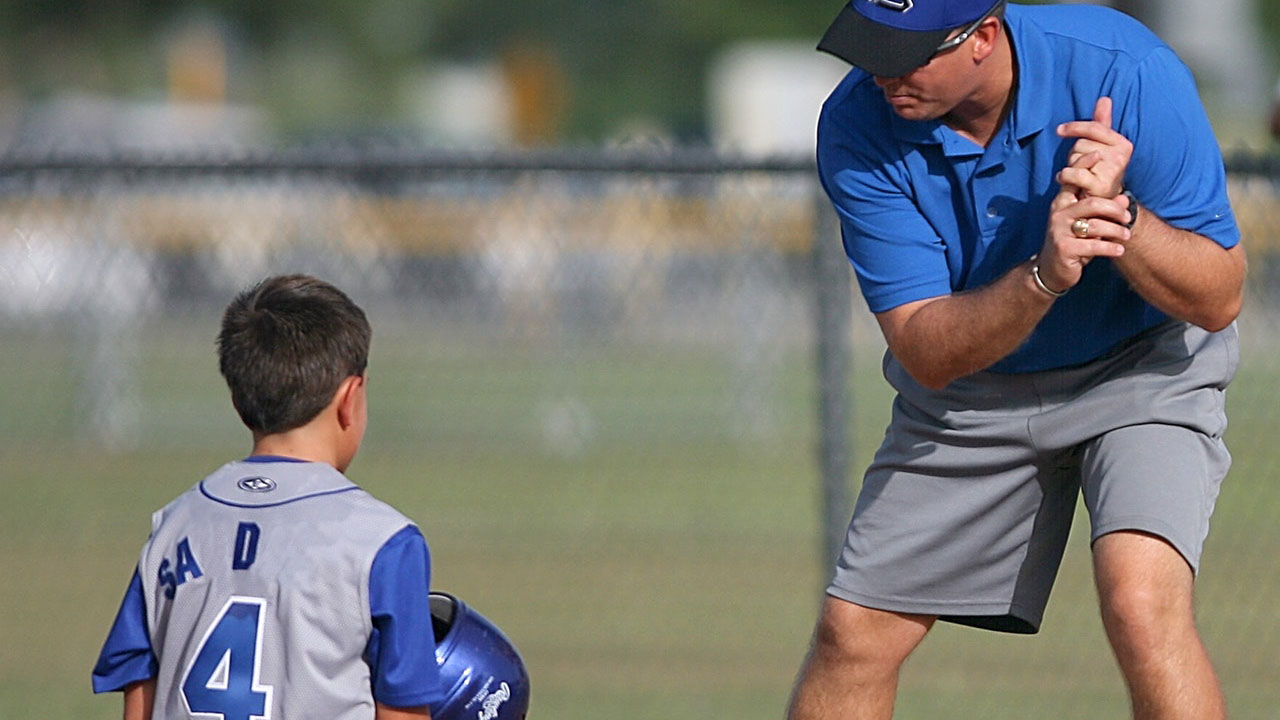
How To Run An Efficient Baseball Practice
When planning their season, coaches put a lot of thought into how each baseball practice session should go. There are often several goals to accomplish, and when working with young players, things tend to move slower than anticipated. In order for practice to be effective, coaches should focus on quality, not quantity. The team will be much better off if each player practices a move correctly ten times than they would be practicing it rushed and incorrectly twenty times. Coaches should use the following tips as a guide to running smooth, effective practices.
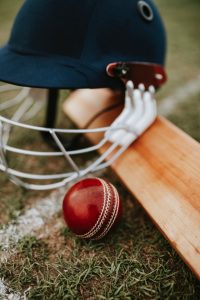 Drill Rotation
Drill Rotation
The most efficient method for practicing several drills within a practice session is through the drill rotation. With this approach, the coach will set up various stations throughout the field where players will work on specific skills. Players will be divided into small groups that rotate
through the stations together. The simpler the skills, the better, because explaining a complicated drill each time a group comes to a station will waste time that could be spent actually practicing.
Help is Key
For this method to be successful, it is very important to have assistants or parents to oversee each station. These helpers should be able to understand the drills and know what to watch for to make sure players are performing them correctly. They don’t have to have coach’s knowledge,
but they should be told what improper form looks like so they will be able to correct players as needed. While the players are warming up, brief the helpers on each drill they will be overseeing. Ideally, enough helpers will be available so the coach can be able to observe at all the stations.
Watching the Time
Before practice begins, the coach should know how much time players should spend at each station. However, he should also be aware that sometimes more time is needed. Being flexible is crucial when coaching young players, and coaches should remember that it is important for each
player to be able to practice the skill correctly. Make up for lost time by making sure players are hustling from station to station, and take notes on where each group left off so they can practice that drill at the next practice.
Make it Fun
Finally, coaches should focus on keeping practice fun. In addition to regular drills, some of the stations should be games where the players work on the skill while competing with their teammates. Young players can learn just as much from games as drills, and they often work harder when there is a competitive edge. Additionally, having fun at practice will instill a love of the game and make the players excited to come back the next time.
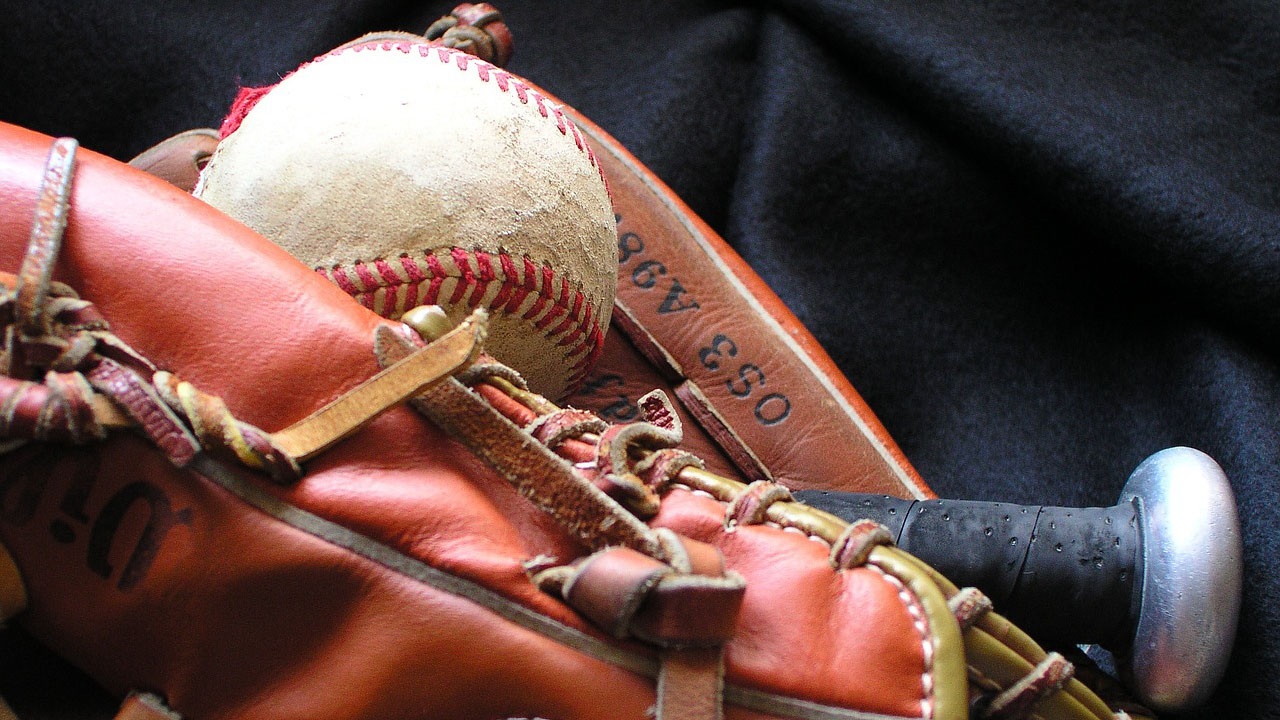
Restore Wet, Ruined Baseballs with Some Time in the Oven
We’ve all done it – left a baseball or two (or ten) out in the rain. Not only do they get wet, but they get heavy; they no longer fly true, they sting when you hit them, and they throw off your rhythm.
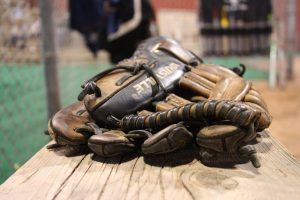 Many coaches simply throw them away, or allow their players to launch them into adjoining lots with an impromptu home run hitting contest. However, even cheap baseballs cost a dollar apeice, and quality leather balls can be three, five, seven dollars, or more! This says nothing of the truth that a coach can never, ever have too many baseballs.
Many coaches simply throw them away, or allow their players to launch them into adjoining lots with an impromptu home run hitting contest. However, even cheap baseballs cost a dollar apeice, and quality leather balls can be three, five, seven dollars, or more! This says nothing of the truth that a coach can never, ever have too many baseballs.
Can you really afford to throw an otherwise serviceable ball away?
If not, then I suggest that you bake them!
Place as many baseballs as you need to resucitate into a regular, everyday kitchen oven. Please do be sure to allow plenty of room; it goes without saying that the balls should never be exposed to open flame, nor should they be allowed to touch the sides or heating elements of an oven.
Heat the oven to no more than 180 degrees farenheight, then allow the balls to bake for four to five hours. This is no hotter than the interior of your car gets on a hot summer day with the windows rolled up, so don’t worry about any damage to the balls.
If the baseballs have been left outside for days or weeks (and still haven’t begun to rot), it may take several trips through the oven before you manage to bake enough moisture out to make them usable again. However, if you are patient, you can save yourself some money – and keep from throwing away otherwise perfectly good baseballs – by doing a little baking.
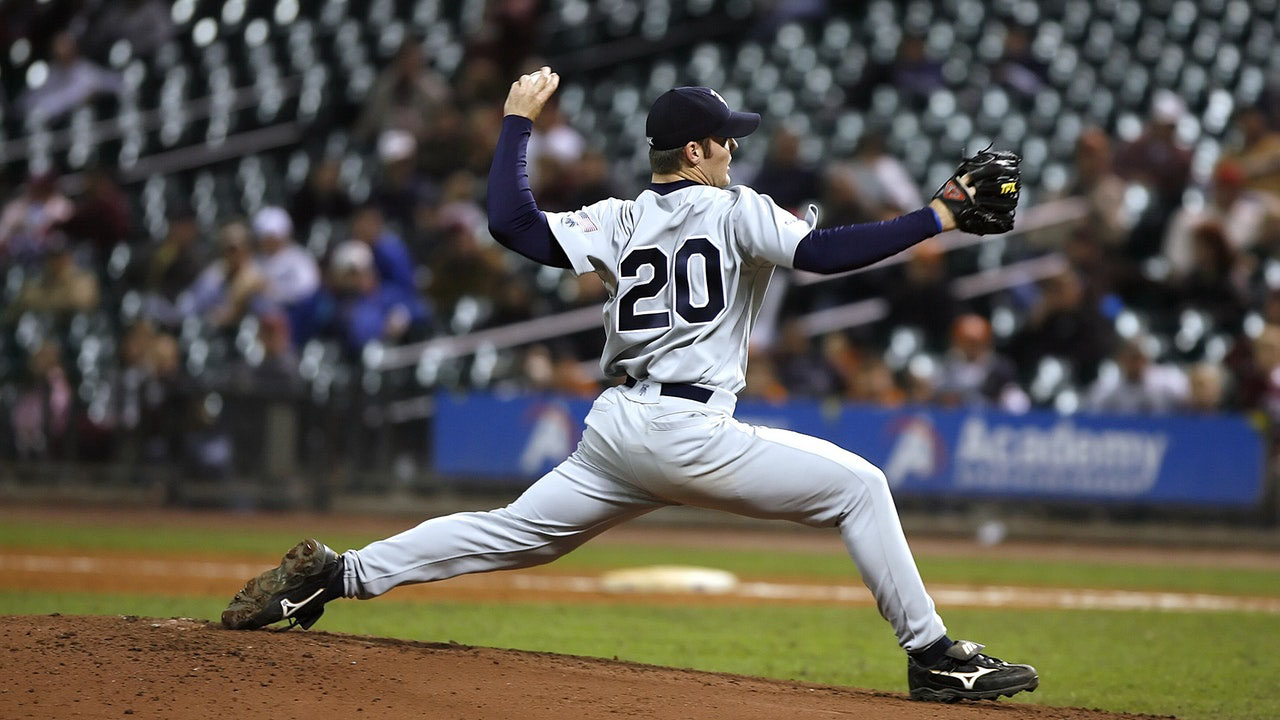
How to Play Shortstop (the Right Way)
This article – How to Play Shortstop (the Right Way) – is part of our “How to Play” series aimed at helping youth league coaches properly instruct their players on the fundamentals of each position. the shortstop is usually the best player on the team, and the head coach is often tempted to let him do what he wants, figuing that other players will only get in his way.
This kind of coching does a huge disservice to the team as a whole and even to the star players themselves, who tend to develop very bad habits because of this. Never underestimate the power of a well-coached team – time and time again, at every level of competition, we see that teams who function as a team outperform those who do not, even when the opposition supposedly has more talent or ability.
Of course, in order to properly prepare the team, you must understand each position!
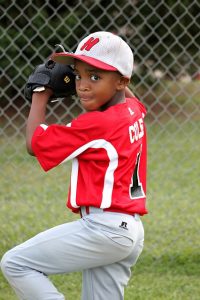
Requirements for the Shortstop
Your shortstop must be mobile and quick on his feet. While raw speed is not an absolute requirement, the faster he is, the more range he has; among infielders, the shortstop has the most need of speed. Naturally, your shortstop must have a solid glove – he frequently has the best defensive skill of any payer on the team. Shortstops routinely throw to first base, sometimes from deep in the hole; therefore, arm strength is a big requirement, as only the third baseman has a longer throw in the infield. Above all, a shortstop must be able to make decisions and think on his feet, as he is the captain of the defense, and is responsible for setting the tone on the field.
Basic Responsibilities
On any contact, the first step should be toward the ball. The player’s momentum will carry him either to the ball, or toward his base.
The right side of the infield is the shortstop’s domain – anything hit between second base and the left foul line is his responsibility. If he can get to the ball, he should do so. If the ball is hit to the third baseman, it is his job to back up the play. If the ball gets into the outfield, he should sprint out onto the grass and act as a cutoff man.
If the ball is hit between second base and the right foul line, the player should always cover the bag in the event of a throw from second or first. If the ball goes into the outfield, he should be prepared to receive a throw at the bag.
It is vital that the second baseman and the shortstop communicate and clearly understand when each will be covering the base! If they get into one another’s way, outs will be lost.
Advanced Reponsibilities
With a runner on first and less than two outs, the top priority should always be to attempt a double play. If fielded near the bag, the player should know whether to step on the bag himself or to make the throw to second base via the underhand toss. However, the player should always bear in mind that the first responsibility is a sure out – make the throw to first if he does not think he hs a chance to get the runner at second.
In the event of a bunt, the third baseman will be charging the ball, leaving third base vacant. The shortstop must wheel over to third to cover the bag, while the second bseman will likewise shift to cover second.
If a runner attempts to steal second, both the shortstop and second baseman should break for the bag. Usually, the shortstop will cover the base, while the second baseman will back up the play a good ten feet deep. However, if the shortstop does not make it (for whatever reason), the second baseman *must* take the bag.
Shortstop is absolutely vital, and should be filled by the best defensive player on your team. Even so, the shortstop should know his role, and play within that framework, or you are simply giving away outs.
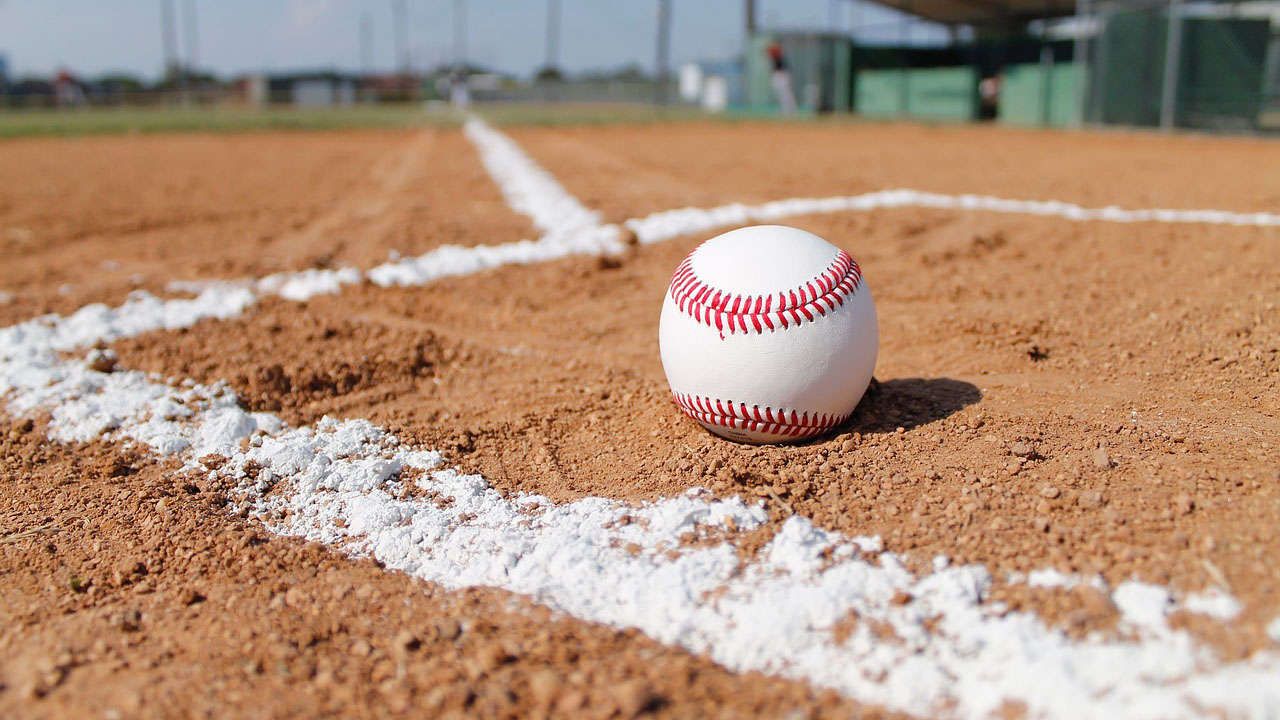
How to Play First Base (The Right Way)!
This article was written with the goal of helping youth league coaches learn to properly instruct players they coach on the basics of each position.
What is required of the First Baseman?
To be a first baseman, one must for one have an excellent glove, that is capable of catching most anything thrown at or near him. While speed is not the main factor at this position, the fielder in position must still be quick enough to move and react. Bravery is also a very useful trait, since often the player will have to stretch out to make a difficult catch or scoop and still keep the foot on the bag.
That is why, and with good reason, coaches will often try to get a tall, and preferably left handed player sitting at first base. The player should be tall, since the taller, the longer the reach, and thus fewer missed balls due to physical limitations. Left handedness is preferential for the exact same reason, a slightly longer reach at first base, which might mean a couple extra calls per year when it comes to close plays.
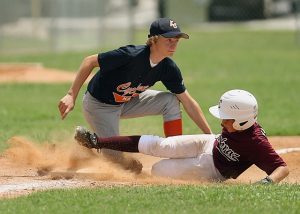
Basic Tactics
No matter the contact, the player should at all times know whether the ball is approaching him or not. In the case the ball is flying towards him, he should definitely try to make the play, as should any other fielder. In the case the ball is going somewhere else, he should still cover the bag, regardless of the chance of play at first base.
More Advanced Tactics
In the role of a first baseman, the player must be a fast thinker, and while getting the lead runners is commended, the out at the first base is safer and most of the time the better option compared to the chance of failing to get a lead runner and coming away empty handed.
When it comes to bloop hits, or on grounders pulling the player too far off of his bag, it is up to the first baseman to decide whether they should tag the base themselves or toss it to the second baseman or covering pitcher.
If a bunt happens, the course of action for a first baseman is to charge the ball and allow the second one to field his bag. Care should be taken however to prevent the batter pulling back the bat and laying a grounder the hole in the middle.
In the event of a play getting to the outfield, the player needs to remain vigilant. There is always a possibility of a run down occurring, in which case he will need to either back up a throw or cover his base. Priority stands of backing up throws coming in from left field to second base.
And finally, the first base is always the center of action. Only the best players should be put on the positions, since without a good first baseman, any team will find themselves giving away outs consistently.
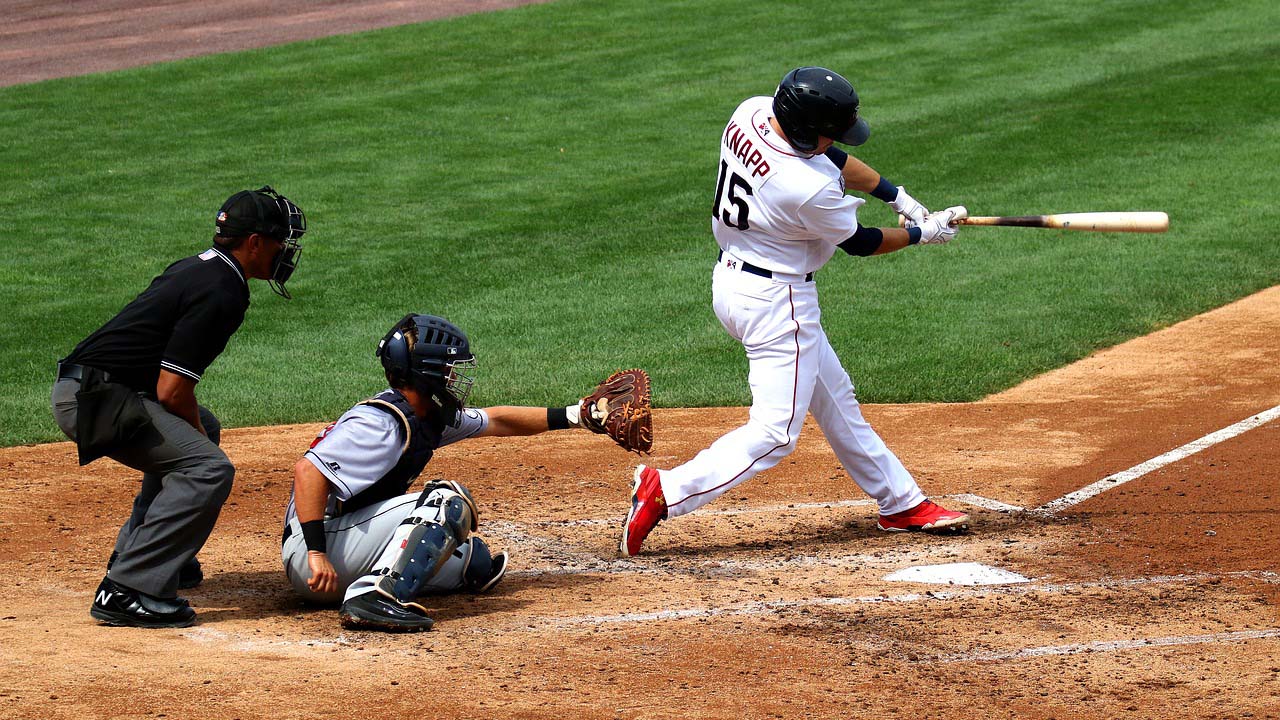
Take Care of that Pitching Arm!
My own son plays in a Dixie Youth baseball league that follows the optional rule of allowing kid pitch at the “Shirt & Cap” level – in other words, instead of facing pitching machines, our seven and eight year olds pitch to one another. In many ways, I think this is a boost to their overall skills; by the time they reach the 9-10 year old league, where most leagues being pitching these days, our kids seem to have a leg up in regards to both pitching and plate discipline. Of course, we do endure a lot of walks from young pitchers to get there…
But I digress. This article is about arm care, and making sure that you do all you can to prevent injury and maximize recovery. One of the very best players – and consequently, one of the very best pitchers – in our league last year began complaining of arm pain halfway through the season. Now, I understand that pitching is stressful on the arm, and youth pitchers are certainly using muscles which are probably not used to such exertion, but still, I worry about the fact that if a seven year old has already hurt himself, and little was done to remedy the situation, how long of a pitching career can he really hope to have? How many kids are there across the country who injure – or even permenantly damage – their arms due to lack of arm care?
Pitch count
First and foremost, keep an eye on the pitch count. Most youth leagues only allow pitchers to go for a certain number of innings per week, bt we all know that innings are a poor mesurement of a pitcher’s exertion; pitch count tells the true story. A pitcher can conceivably get out of an inning with only thre pitches (three ground ball outs in a row), or can labor for 25-30 pitches. Last year in our league, a typical inning for a pitcher would esily be fifteen to twenty pitches.
Following are pitch count recommendations from the American Sports Medicine Institute. It would be an excellent idea to keep a close eye on your pitchr’s pitch count, and follow these guidelines pretty closely. Note that tha ASMI reccomends no more than two games per week for any of these age groups.
| Age | Max Pitches per Game |
| 8-10 | 52 |
| 11-12 | 68 |
| 13-14 | 76 |
| 15-16 | 91 |
| 17-18 | 106 |
Furthermore, the ASMI gives some guidelines as to how much rest should be allowed between outings, depending on the pitch count amassed by the pitcher.
| Age | 1 Day Rest | 2 Days Rest | 3 Days Rest | 4 Days Rest |
| 8-10 | 21 | 34 | 43 | 51 |
| 11-12 | 27 | 35 | 55 | 58 |
| 13-14 | 30 | 36 | 56 | 70 |
| 15-16 | 25 | 38 | 62 | 77 |
| 17-18 | 27 | 45 | 62 | 89 |
These are recommended averages. For further details, please see http://www.asmi.org/SportsMed/youth/PITCHCNT.PDF (the complete ASMI research doc in pdf format).
Keep that arm warm!
In between innings, a pitcher’s arm temperature can cool rapidly, only to be asked to undergo the stress of pitching again once te muscles have contracted due to the cooling effect. This is why you see major league pitcher on television wear a jacket in between innings, even in the middle of summer.
Follow their example. If your pitcher will be pitching again, make sure that he keeps a jacket on – if only on the one arm. This will result in less soreness the next day, as well as a lower risk of injury.
Run boy, run!
As soon as your pitcher leaves the mound at the end of his outing, he needs to run several wind sprints. This helps bring much needed oxygen via incresed blood flow to those exerted muscles. It’s also an excellent idea to have a coach or another player help the pitcher stretch his arm and legs joints, to prevent them from tightening up.
Of course, in youth baseball, pitchers are usually among the best fielders on the team, so they will frequetly be placed at another defensive position when lifted, rather than sent to the dugout. In this case, have them run at the end of the inning.
Peas, please!
When the outing is over, we now want to cool that arm down – this stops the microbleeding in the muscle tissue of the arm. Of course, your park’s concession stand probably has plenty of ice, and will probably put it in a ziplock bag for you. But if not, a nice bag of frozen peas works perfectly; they stay cold for a good twenty miutes or so once applied, which is about optimal time for icing the arm, they contour themselves nicely to the shape of your player’s body, and they don’t melt. Put a “do not eat” label on them and reuse them game after game.
Do make sure to put a thin towel between the cold and the player’s skin.
Move it again.
Especially if you’ve iced down your muscles, you’ll need to restore blood flow. A nice jog or brisk walk will handle this for you.
Feed those muscles!
Make sure that your player gets a good high protein/high carb meal 1-2 hours after pitching. The body needs to repenish the used energy, and needs to tend to those exerted muscles. Bananas are an excellent choice, by the way.
Follow these guidelines, emphasize good mechanics while pitching, and you should minimize any chance for injury to your pitchers.
Don’t Forget Your (Baseball) Tee Time!
Most experienced coaches are already quite familiar with the advice I am about to give. In their case, please forgive my restating of what might be obvious, and browse some of the other articles on this site. The new baseball coach, however, would do well to pay attention.
I am about to reveal to you the single most useful tool for improving the hitting skills of your batters. Please, take a seat. I don’t want the shock to overcome you. Are you ready?
I present to you: the batting tee!
That’s correct. The tee is the single most useful tool for improving the hitting skills of your batters. You may bellieve that your players are too old to benefit from a tee… and you could not be further from the truth. Did you know that major league hitters practice by hitting off of a tee every single day? Are you suggesting that your eight (or ten or twelve) year olds know more about hitting than Alex Rodriguez, Barry Bonds, Derek Lee, or other big league stars?
Now that I hopefully have your attention, I will explain why this is. Understand, there is no substitute for live pitching – tee drills cannot help with your batter’s sense of timing, or his ability to pick up on or identify pitch location, pitch type, velocity, etc. But unless you have Greg Maddux pitching your batting pracice sessions, there is no way you can hope to put the ball in the same place every time, which allows you to analyze the batter’s swing. With a tee, you can really watch what your hitter is doing, make suggestions, and get many, many repititions in in a reltively short period of time. This is the reason that, if you were to take your player to pretty much any professional hitting coach in the country, the first thing the coach would do would be to drag out a tee.
If your player has a hitch in his swing, you can identify it with a tee. If he needs to work on the inside pitch (or the low pitch, or the outside pitch), you can simply move the tee and give him extra repititions. If he has a loop or dip in his swing, you can place a second tee behind the one holding the ball and force him to adapt a correct swing path. With a tee, you can build the all-important muscle memory needed for a good, consistent swing.
I cannot emphasize this enough – very few practices should ever go by without your players hitting off of a tee. This is an absolutely ideal station activity, is easy to place, and if you happen to also own a net, can be done in even the smallest of spaces.
The bottom line: if you do not own a tee, and you coach a youth baseball team, go and drop a few bucks on one today. You will not regret the investment in the best hitting tool ever made.
The 5 Best Infield Baseball Gloves in 2019
Introduction
Catching a baseball that is traveling at breakneck speed is no easy task, especially when you don’t have the appropriate equipment. The great velocity of the ball can easily injure your hand, and even compromise your chances of winning a game. While there are various types of gloves today, the best infield baseball gloves are ideal for intensive sessions of time on the pitch. Unlike conventional baseball gloves, the infield versions consist of unique materials, that are both durable and comfortable on the hands.
Playing sports has many benefits, with a recent study linking it to the production of feel good hormones in the body. More so, these gloves are also suitable for various applications, including DIY practice and professional sports as well. These gloves help to cushion the extreme travel speeds of baseballs, thus taking your performance to the next level. We have identified some of the best gloves for baseball for you to consider. This list is based on several hours of research and in considering the best gloves for tennis buying guide. The gloves include:
Wilson A2000 SuperSkin Baseball Glove Series
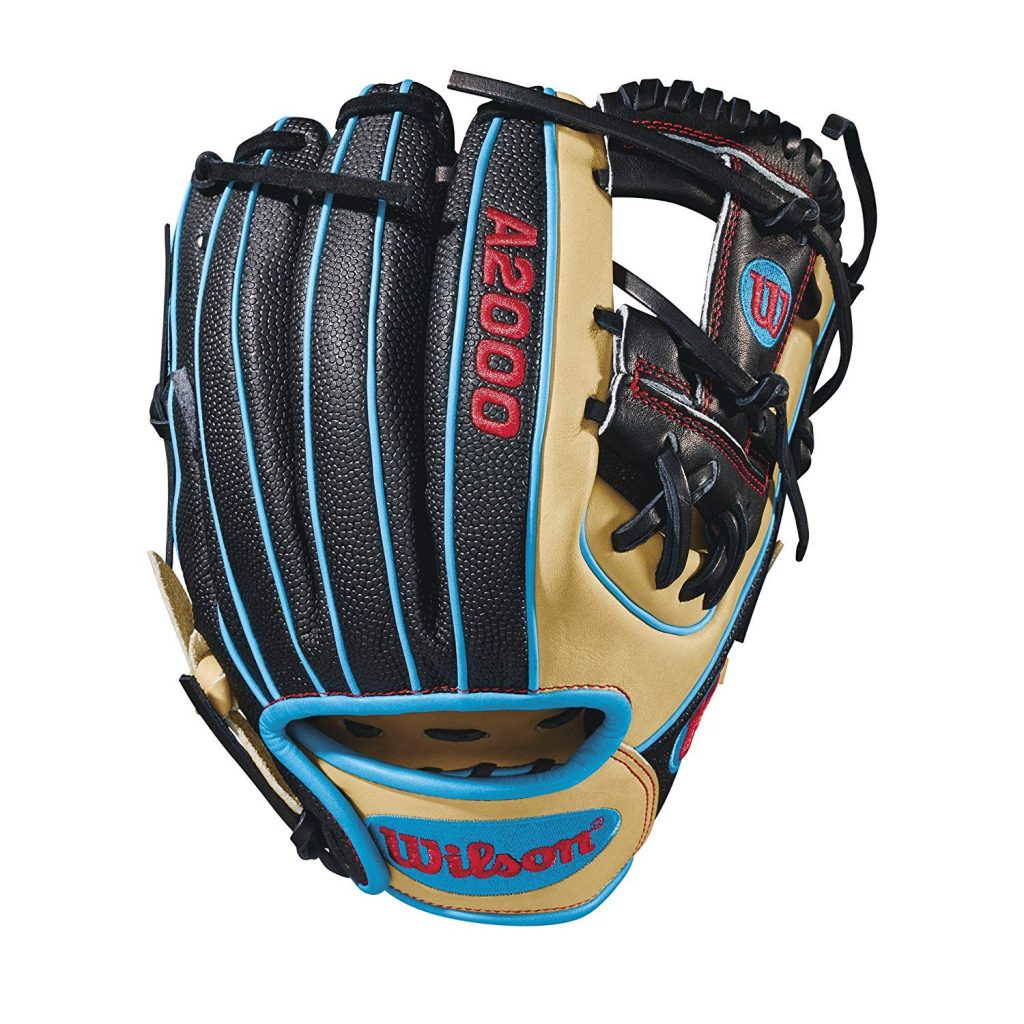
Catching baseballs traveling at bullet speed is not easy. However, the Wilson A2000 gloves might just be the perfect place for you to start. The gloves feature the unique patented Pedroia, fit which makes it ideal for users of different hand sizes. On top of that, the gloves are also made using Orange Tan Pro stock leather material. Thus, you can expect a glove that has a smaller hand opening and narrow finger stalls to fit. Even more, the brand is continually reinventing its flagship glove series, and this means novel design features each time.
The Ups
- Made using orange tan pro stock leather
- Dependable material construction for baseball games
- Has a rugged design and feel suitable for intense baseball
The Downs
- The gloves feel somewhat rough on the hands
- It could have better ventilation features
Mizuno Select 9 Baseball Glove Series
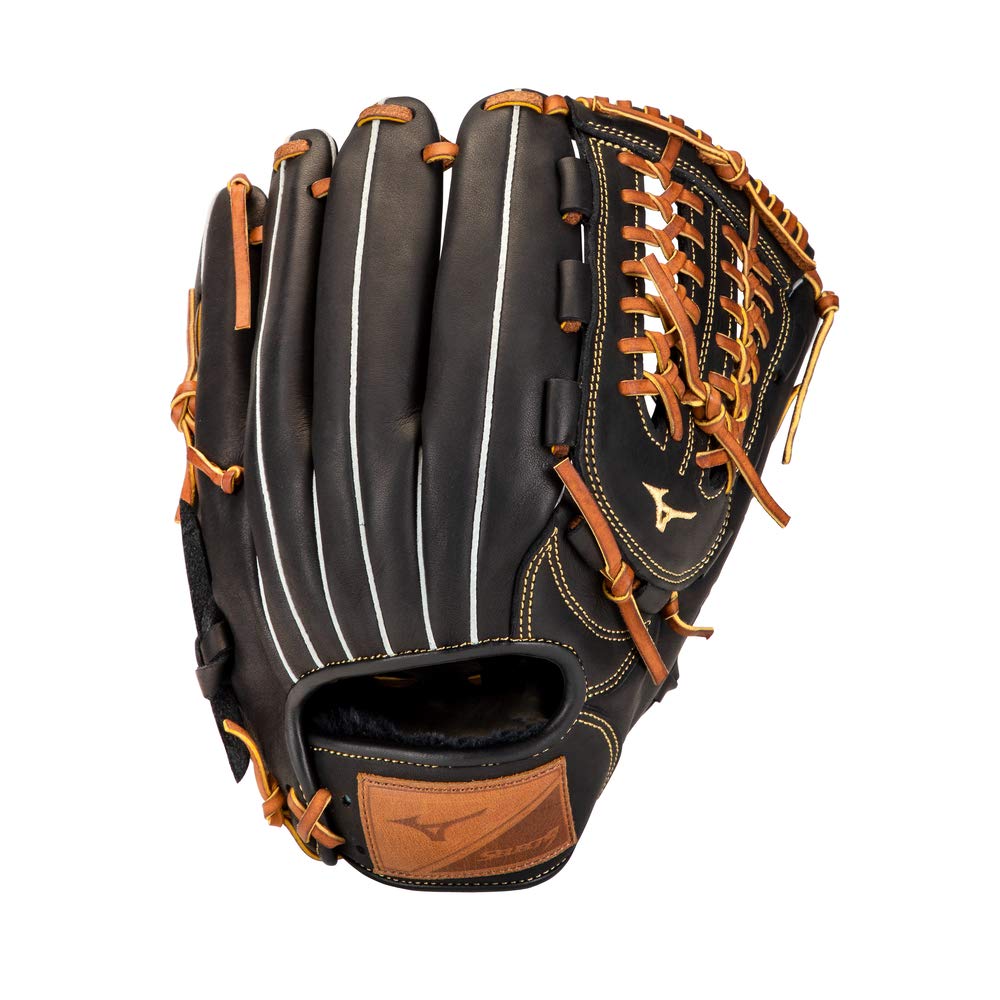
With the Mizuno Select 9 Baseball series, you can be sure of an excellent addition to your baseball playing regimen. The gloves come with unique roll welting material, that provides a cleaner look and stability through the fingers. More so, the rugged silicon patch also does well to make the glove unique and suitable for many purposes. Featuring an ultra-soft pro palm liner, this glove has an excellent feeling and soft finish. Furthermore, the professional patterns are also developed to suit the needs of the best baseball players in the world
The Likes
- Comes with roll welting for a cleaner look and stability
- Also equipped with a rugged silicon patch
- The palm liner provides a unique feeling and soft finish
The Downs
- The gloves are somewhat heavy for some users
- Could also use an improved lace lining design
Louisville Slugger Tpx Infield Baseball Glove
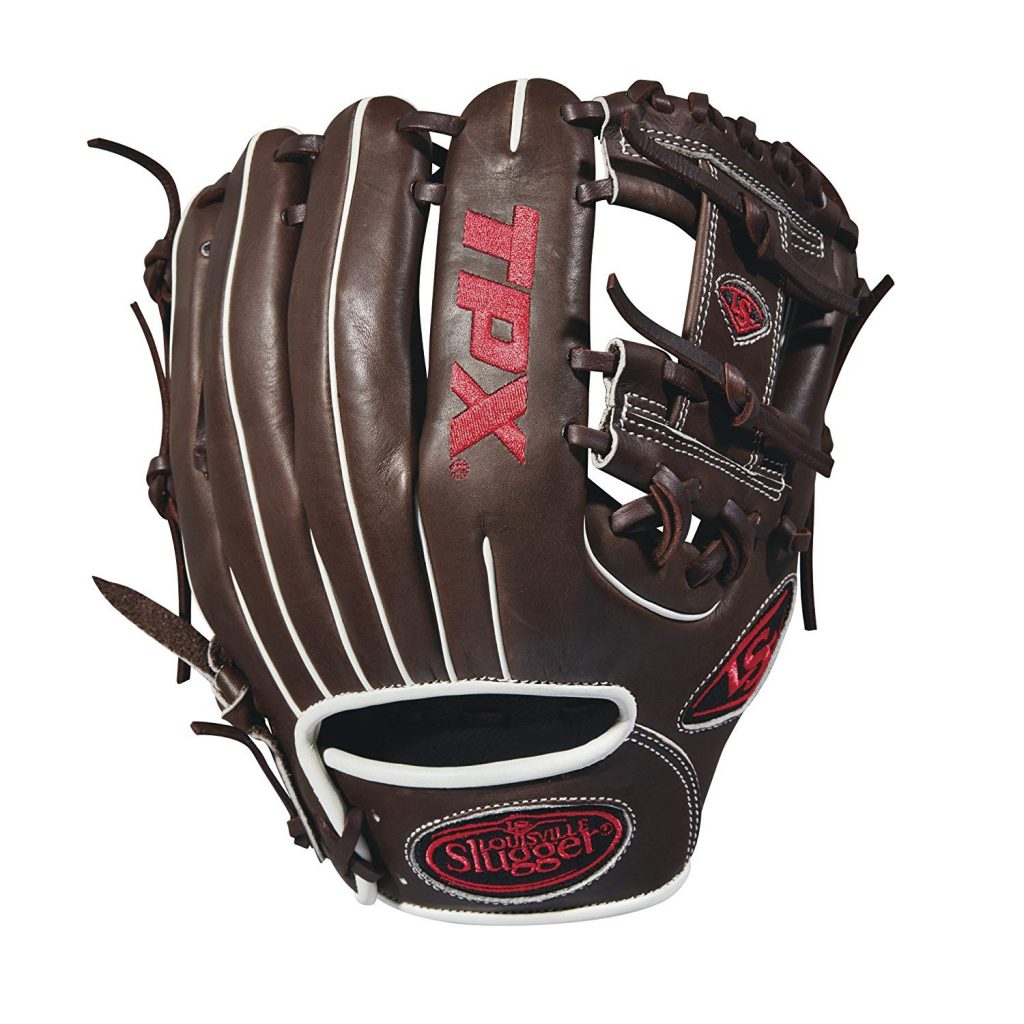
The Lousiville Slugger 2018 Infield Baseball glove is an excellent recommendation for your baseball playing needs. To be specific, the gloves have an H-web material construction, that offers optimal ventilation and ease of use benefits. Also, the inclusion of the brown and white top-shelf leather material makes the glove heavy-duty solutions for your baseball games. Featuring a professional and appealing design aesthetic pattern, these gloves also let you take on the tennis pitch with style. While these gloves are compact in design, they don’t impose any compromise on your ability to cushion traveling baseballs.
The Ups
- Has a unique h-web construction
- Comes with a unique professional pattern
- The gloves provide exceptional ventilation
The Downs
- The laces are not well-positioned for some users
- The pattern and color of this unit is somewhat boring
Rawlings Sandlot Baseball Glove Series
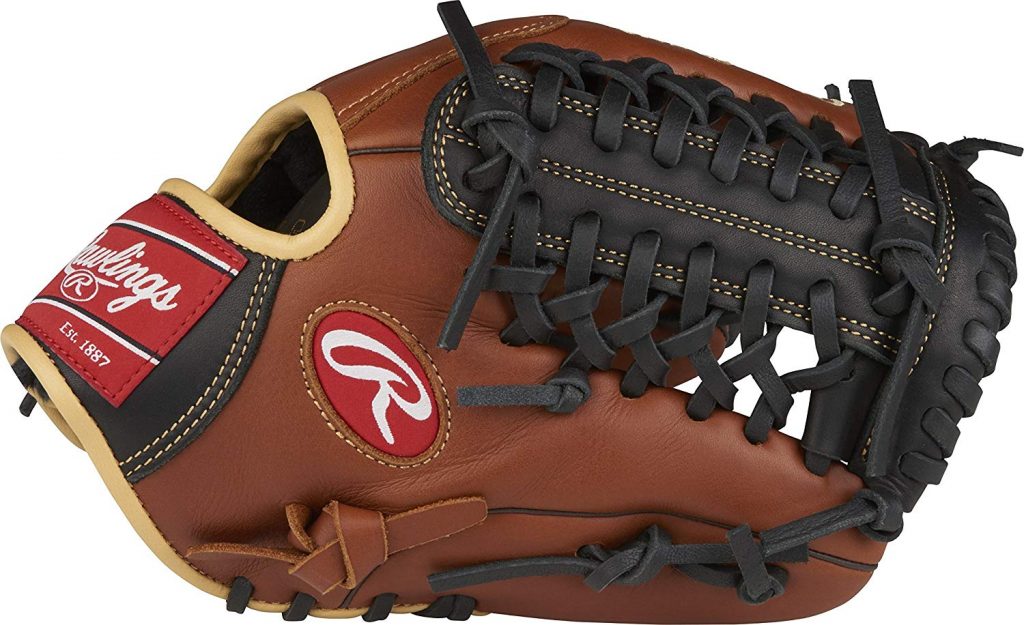
The Rawlings brand is well known for producing some of the best baseball gloves on the consumer market. This includes the Rawlings Sandlot baseball glove, that is both durable and comfortable in the hands. Crafted using full-grain and oiled leather material, these gloves are perfect for various baseball applications. Besides that, the zero shock palm pads work well to protect the hands from the excessive shock of a traveling baseball. You will also appreciate the availability of the different glove lengths and styles to suit your needs.
The Ups
- Equipped with oiled leather material for a vintage look
- The zero shock palm pads protect the hands
- Has a padded finger back lining for enhanced user comfort
The Downs
- The gloves become heavy when exposed to wet conditions
- It could also use an improved air ventilation system
Wilson A2K Baseball Glove Series
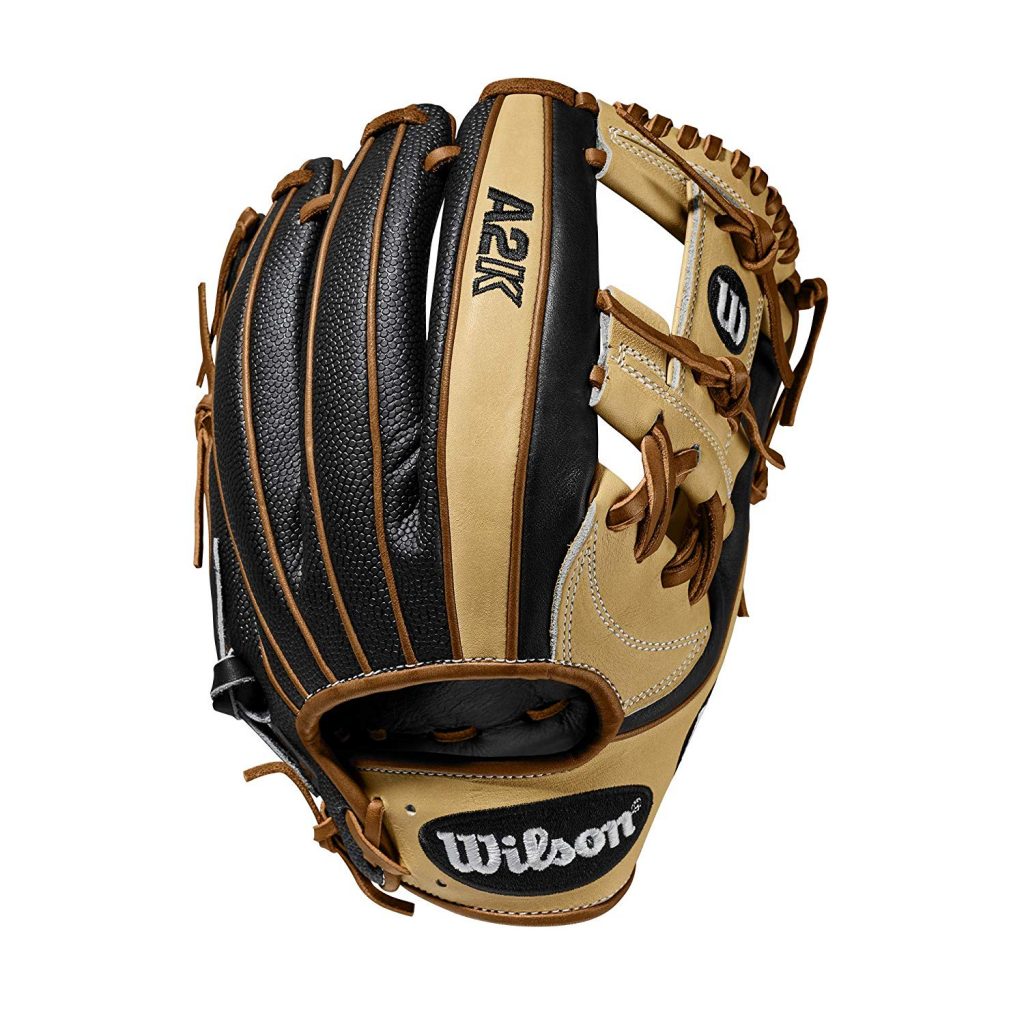
Make a good impression with your performances on the pitch by getting the Wilson A2K baseball gloves. These gloves have a unique H design, and three times enhanced shaping to reduce break-in time. As one of the best gloves, the Wilson A2K gloves also provide optimal ventilation for your hands. Furthermore, the blonde and black pro select leather are also suitable thanks to its unique consistency. The gloves are also made using super black skin, which is twice as durable as the conventional leather material. More so, the rolled dual welting offers a long-lasting shape and enhanced break-in, thereby improving your performance on the court.
The Ups
- H web design and three times enhanced shaping to control break-in time
- Available in blonde and black pro stock leather material
- Rolled dual welting for long-lasting shape and enhanced break-in
The Downs
- The h-web design makes it difficult to clean and maintain the gloves
- The gloves are only suitable for people with mid to large-sized hands
Conclusion
There is no denying it, baseball is among some of the most popular sports in the world today. That said, similar to most sporting activities out there today, you must own the appropriate sporting equipment for your needs. Thus, we have identified this list of some of the best infield gloves to suit your needs. Remember, that unlike conventional gloves, these types of gloves are suitable for intense playing such as professional sports. You can expect features such as heavy-duty liners, mesh liners for ventilation, and more.
The 5 Best Baseball Gloves Under $100 in 2019
Introduction
Affordability! It’s a key factor for many consumers, especially baseball players who want reliable access to various type of accessories. However, to find budget-friendly products, you have to spend hours scouring the consumer market for product offers. Plus, you also need experience with these products to ensure that you choose products with the best value. However, we have narrowed down some of the best gloves under 100 for you to consider.
Even if these gloves are exceptionally affordable, they don’t cause any compromise on the design quality of the gloves. You can expect to own gloves that are not only comfortable on the hands but also suitable for professional sports or even private practice. Even more, the gloves provide optimal ventilation and comfort for your hands, thus making you better baseball player. With that being said, consider these top baseball gloves:
Rawlings Gamer 1st Base Mitts
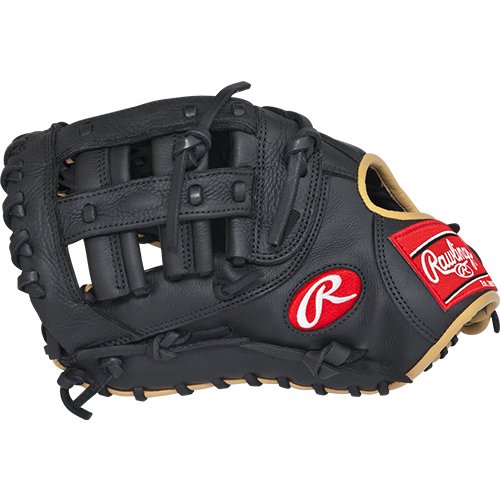
The Rawlings brand is famous for producing high-quality gloves for baseball. This is why the Rawlings Gamer 1s base mitts glove might be an affordable and reliable solution for your baseball needs. Made using a pro soft leather shell, these gloves are both durable and reliable for long-lasting performances. Additionally, the 30 percent player break-in design means that the gloves are reliable, and can also offer solid performances. The inclusion of the deer tanned cowhide lining material makes up an excellent souvenir or a glove with exceptional longevity.
Pros
- Pro soft leather shell that is durable
- Deer tanned cowhide ling material is unique
- Suitable for different types of baseball play
Cons
- The leather material is not waterproof
- The gloves feel somewhat bulky than conventional gloves
Mizuno Prospect PowerClose
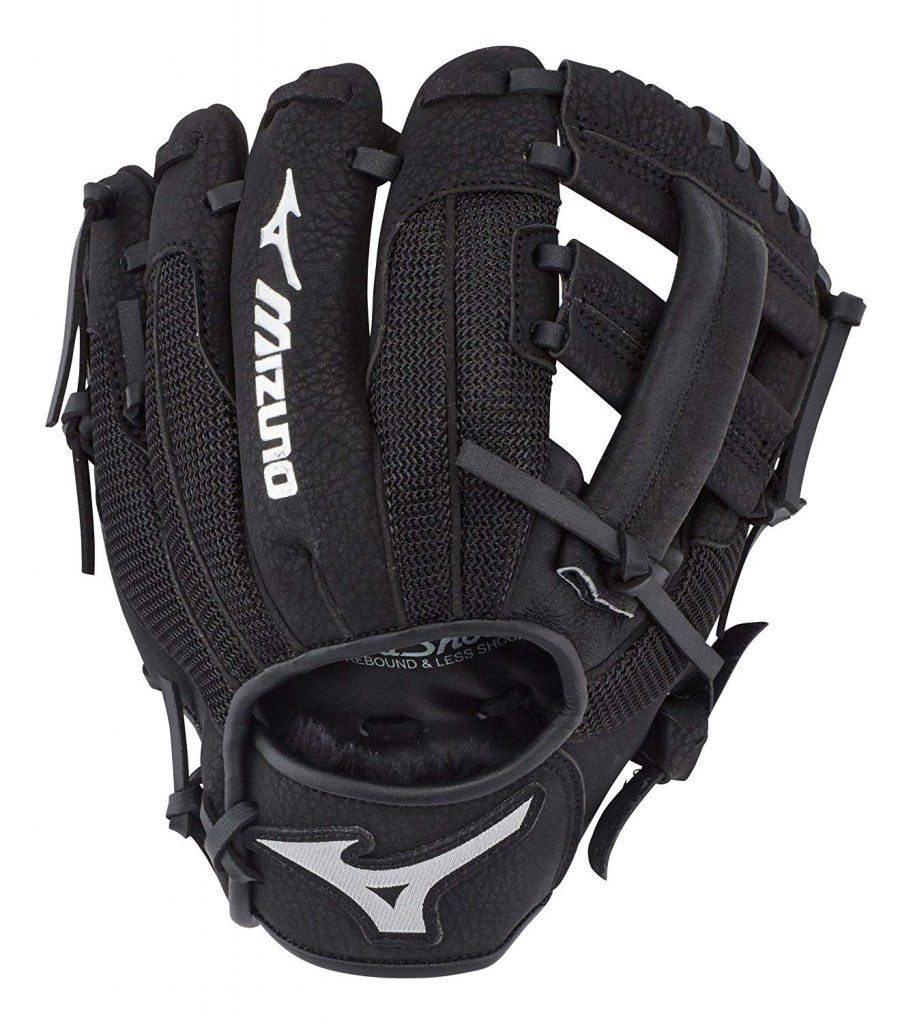
Discover the excellence of the Mizuno Prospect Power close youth baseball gloves, which are perfect for various styles of play. Made using full grain pigskin leather, these gloves are both comfortable and reliable for your needs. They also have a unique butter-soft palm liner, that will provide enhanced durability and comfort benefits. The inclusion of the MZO lining material also helps to disperse any sweat away from the skin. Featuring a unique air mesh back, these gloves guarantee optimal breathability and flexibility as you play.
Pros
- Full-grain pigskin leather material for durability
- Butter soft palm liner is comfortable on the hands
- The MZO lining helps direct perspiration from the skin
Cons
- The MZO lining is not easy to replace when damaged
- The lacing system is not effective enough for some users
Easton Slate Fastpitch Series Baseball Glove
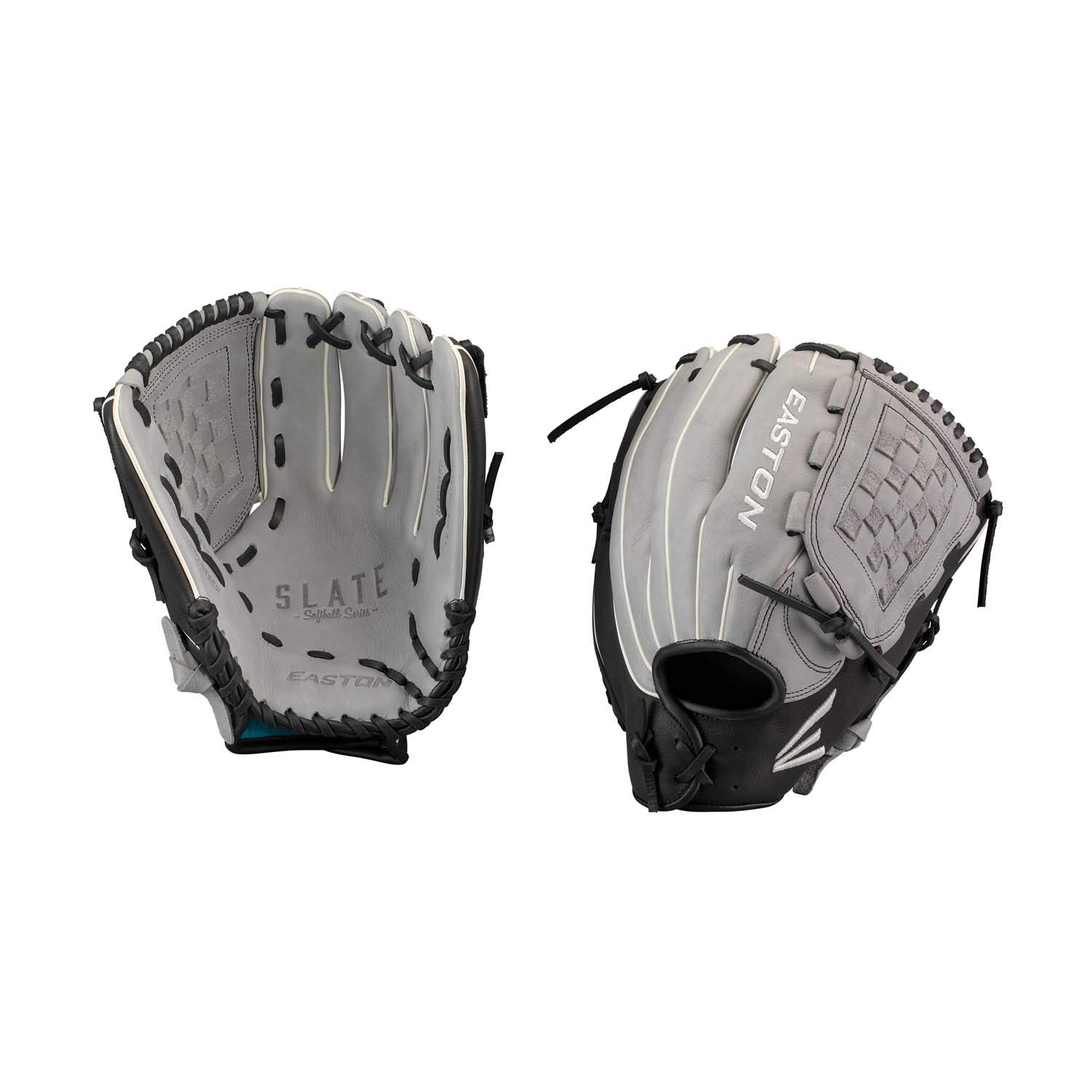
If you are looking for an affordable glove, without any compromise on quality, then the Easton Slate Fastpitch gloves are perfect for your needs. Featuring a diamond pro steer leather shell material, these gloves are durable and suitable for various hand sizes. Also, the durable rawhide laces help to reinforce the durability of the pocket and web. Thus, you will experience optimal ventilation, thereby enhancing your grip on the ball. Maintaining the gloves is also simple thanks to the simple to use and install design. The gloves also have small hand openings, which help to improve your ability to catch baseballs traveling at breakneck speeds.
Pros
- Made using diamond pro steer leather
- Super soft palm lining offers enhanced grip
- The rawhide laces are durable and will reinforce the web durability
Cons
- Some users prefer gloves that are available in various finishes
- Customizing the functionality of the pocket is not easy
Easton Black Pearl Fastpitch Series
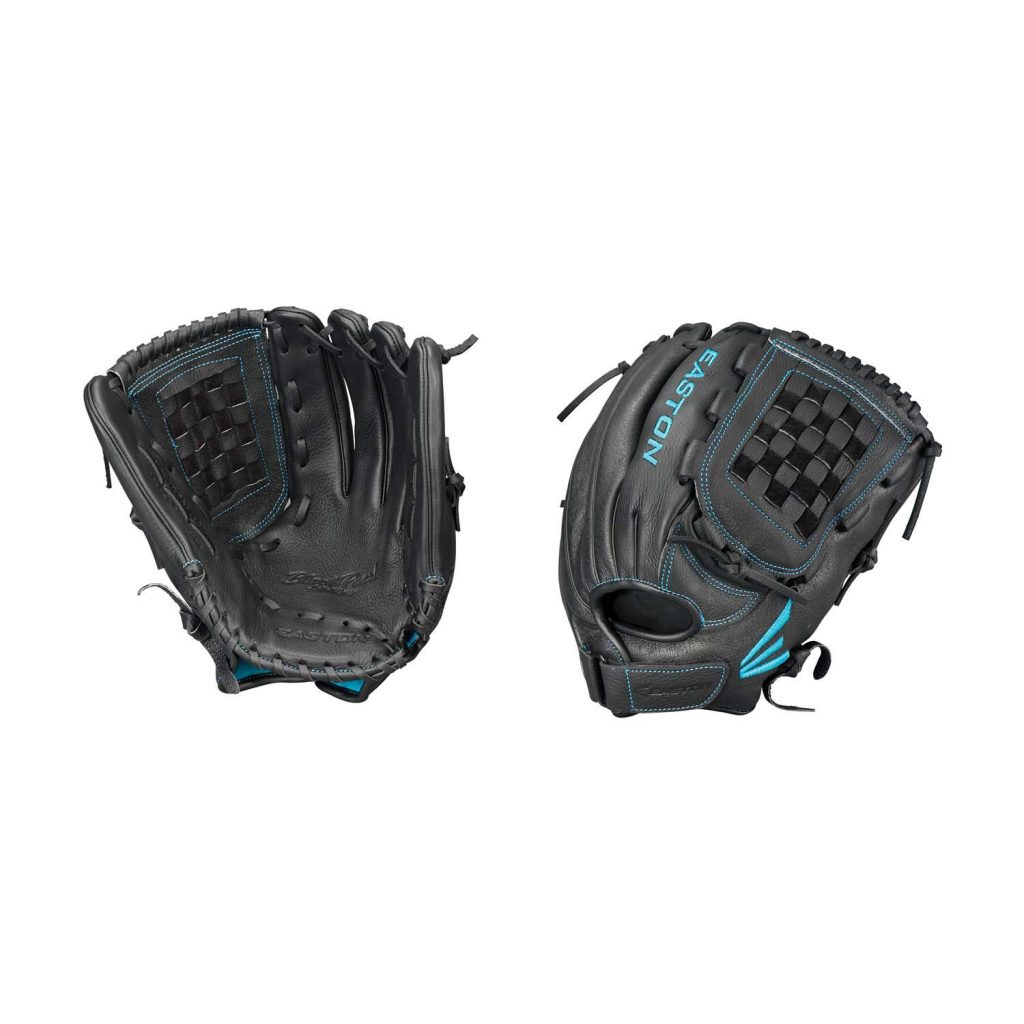
Easton’s all-new black pearl fastpitch glove are also some of the best accessories for your needs. Made using select cowhide leather shell material, these glovers are as appealing, and they are reliable. Furthermore, the gloves have a flex notch system, that provides a convenient pocket closure for convenient storage. More so, the rawhide lace reinforced pocket is durable and suitable for different types of outdoor settings. The small hand openings also provide a tighter fit and enhanced user control. The super-soft palm lining enhances the grip of the gloves, thus taking your performance to the next level.
Pros
- Made using select cowhide leather shell material
- Has a super soft palm lining for better grip and control
- Equipped with smaller hand openings for a tighter fit
Cons
- The gloves should provide improved ventilation
- They also get heavy when exposed to water
Rawlings Gamer Glove Series
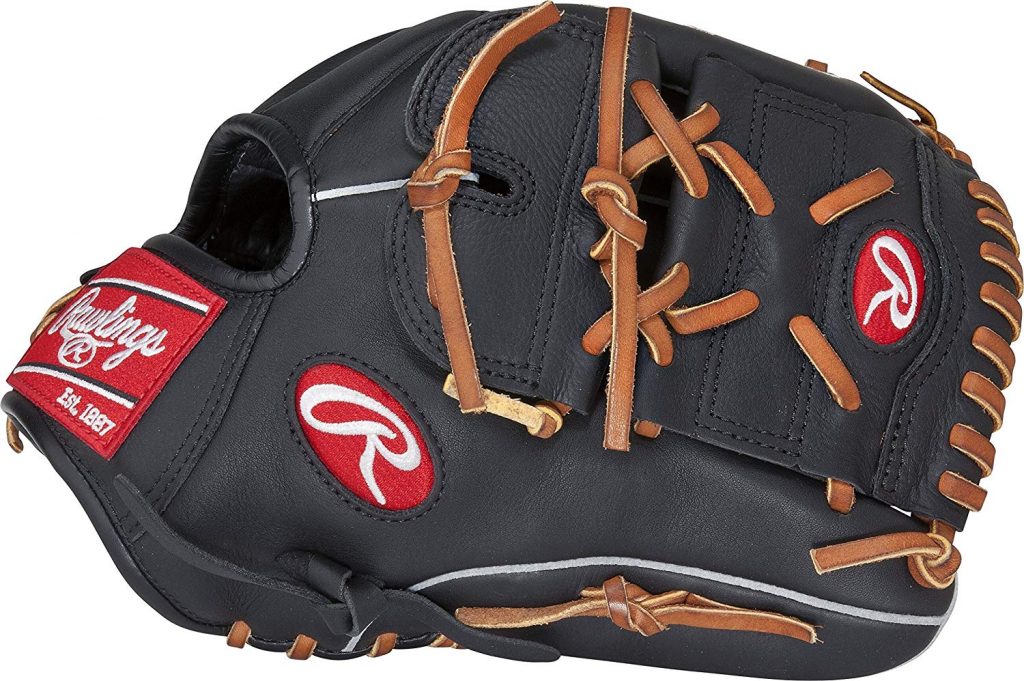
You are one step away from playing like a pro with the Rawlings Gamer Glove series. Not only are these gloves “easy on the pocket,” but they also consist of myriad features to take your baseball experiences to the next level. This 9.5-inch glove comes with a single post web with conventional back. Thus, infielders can practice hand-eye coordination and develop quick hands as well. The gloves come with a new gamer soft shell leather material, that is both durable and reliable for your needs. You can even adjust the glove to suit the specific size of your hand, and to enhance the quality of ventilation as well. Also, the unique pigskin material added for thumb loops helps to provide the perfect fit regardless of hand size.
Pros
- Has a new leather soft shell leather construction
- Equipped with pigskin padded thumb loops
- Durable tanning rawhide leather laces for optimal durability
Cons
- Pigskin material is delicate when exposed to water
- The 9.5 inch is somewhat large for some basic users
Conclusion
Shopping on a budget for baseball accessories is easy, provided that you can make savvy choices for your needs. Being able to identify equipment such as the best baseball gloves under 100 will take time and intensive research. However, we have made this process simple by identifying some of the top brands for you to consider. We considered features such as material construction, ventilation, the brand manufacturer, and more. In considering all these design features, you can be sure of owning a glove that is both stylish and durable as well. Thus, playing baseball becomes a much more thrilling experience with each passing tennis session.
The 5 Best Baseball Gloves for Dads in 2019
Introduction
Aside from being the pillar of the family, dads can be a source of support, knowledge, and friendship. While dads are important people in life, not many people take time to show love and support to such important people. Thus, if you notice father’s day around the corner or if you perhaps feel like showing affection to your dad, then its good if you make good decisions. Based on our research, the best gloves for dads are an excellent place for you to start.
The baseball gloves are not only perfect for getting down and dirty on the pitch, but they also act as excellent souvenirs. For instance, your dad can hand them over to a local baseball star for autographs and keep it like a cherished possession. Furthermore, a baseball glove also provides the perfect opportunity for you and your father to bond – as you enjoy playing outdoors. These things have also evolved significantly over the years, which makes it important to shop wisely each time. Without further ado, consider these best baseball gloves:
Akadema AGC98 Prodigy Series Glove
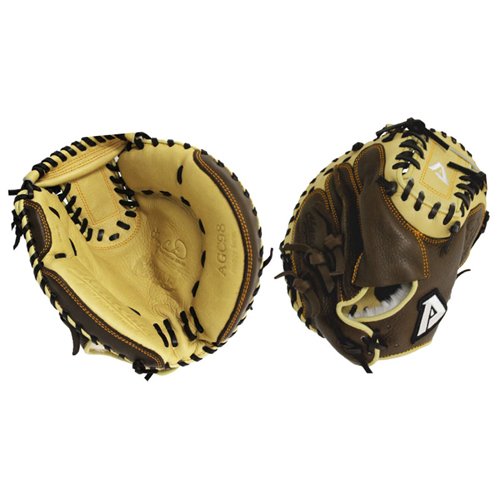
Make a good impression of your dad this year by getting the Akadema AGC98 Prodigy Series Glove. The glove has a unique “stress wedge” design, that is found between the index finger and the thumb. It’s a unique feature that provides shock-absorbing benefits for the hand, as you receive the ball. More so, the inclusion of finger hammocks also makes it easy to position the hands in a secure position in the glove. The unique glove has a double-sided slim padding that provides a larger pocket size and enhanced ball retention. Even more, the glove is also compact and allows for easier throwing and access to the pocket. Thus, you can enjoy enhanced glove to hand transfer functionalities.
The Likes
- Comes with stress technology for shock-absorbing benefits
- Has a double-sided slim padding for enhanced ball retention
- Equipped with a double flex hinge for increased ball contact
The Dislikes
- The logo and writings on the glove stain rather easy
- It also lacks ample ventilation
Wilson A2000 Baseball Glove Series
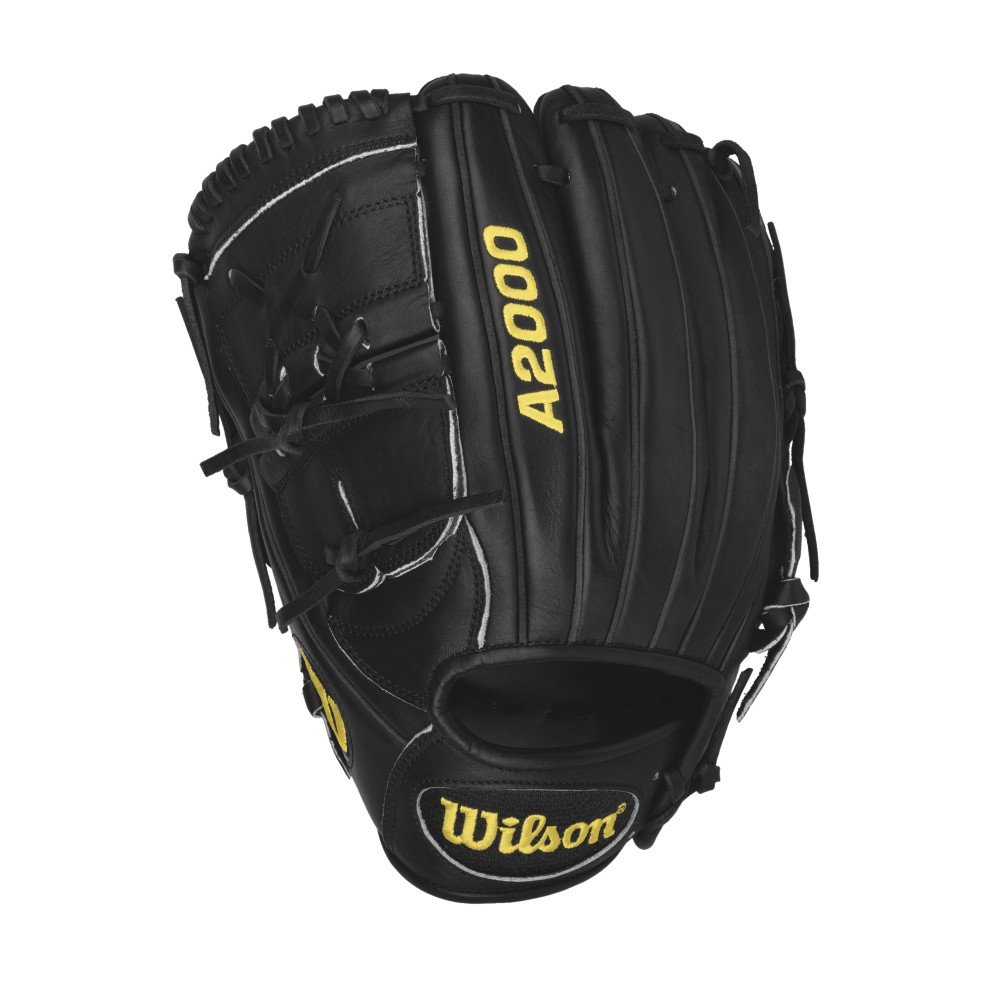
The A200 Baseball glove series features an innovative design inspired by some of the leading baseball brands in the world. For instance, the glove has a wide moon web, that delivers optimal handling benefits. More so, the glove also features a unique Dri-lez wrist lining, that helps wick moisture away from the skin to keep you cool. The glove also has unique Pro Stock patterns, which let you play baseball with style and comfort. Thanks to the pro stock leather construction, you can be sure of a premium glove that is suitable for professional sports.
The Likes
- Dri-lex lining helps to keep the hand dry and cool
- Dual welting for exceptional durability
- Two-piece web construction that is durable and reliable
The Dislikes
- Somewhat heavy in the hands for some users
- The Pro stock patterns fade away with time
Rawlings Heart of The Hide Glove Series
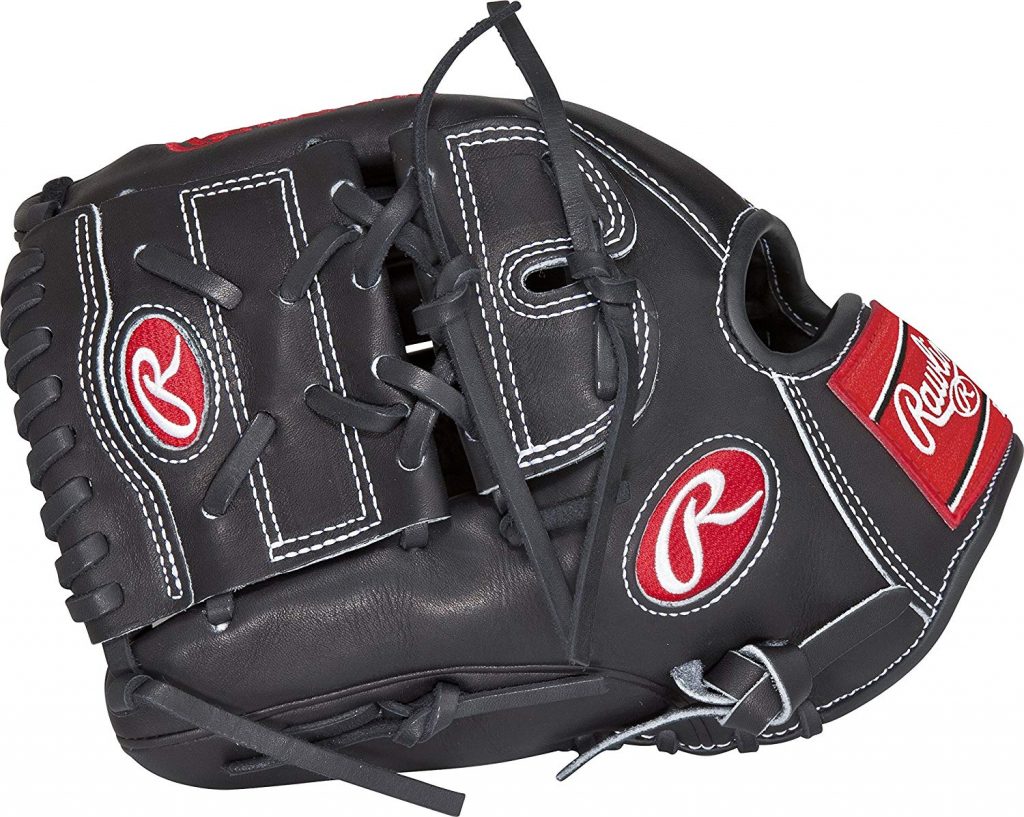
This list would not have been complete without the Rawlings Heart of the Hide Glove series. The glove is made using some of the world`s best steer hides, for optimal comfort and performance. Besides that, the Tennessee tanning rawhide leather laces, offer resilience and strength benefits. The inclusion of padded thumb sleeves helps to provide enhanced user comfort. Even more, the glove has a conventional back and is ideal for shortstops, pitches, and basement. The gloves also make it easy to customize the size to suit your fit. The leather material is also lined using tanned deer cowhide to provide a soft touch.
The Likes
- Made using 12-inch leather material
- Rawhide leather laces provide optimal strength
- Padded thumb sleeves for superior user comfort
The Dislikes
- Should provide better ventilation
- The laces are not tight enough for some users
Rawlings Sandlot Baseball Glove Series
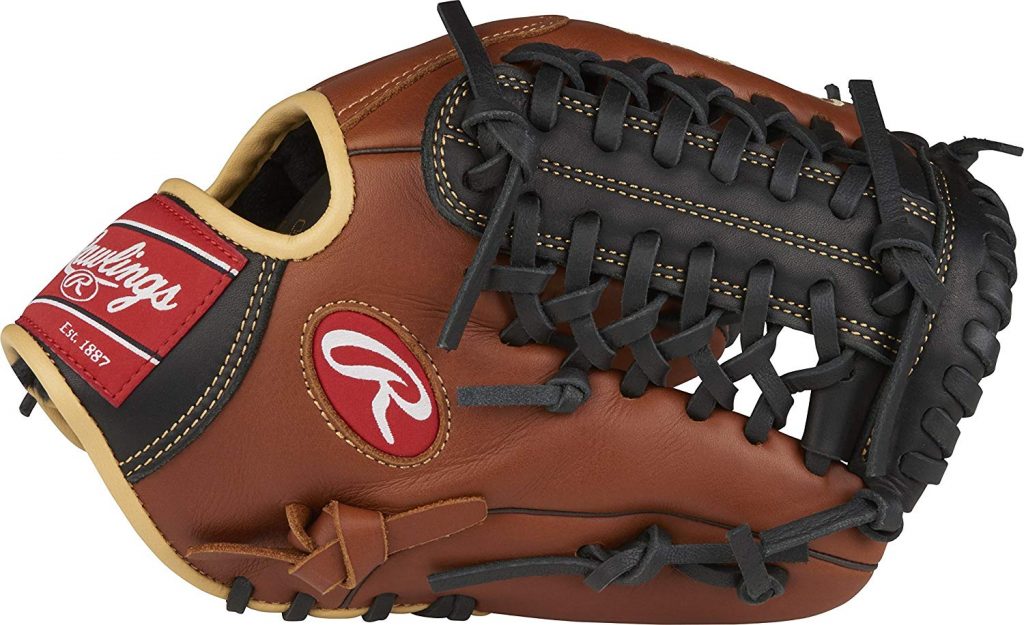
Are you wondering about what makes up the perfect gift for dad? Well, consider the Rawlings Sandlot Baseball Glove Series as the perfect place to start. Made using full grain and oiled leather, these gloves have an exceptional vintage look. Even more, the gloves also have zero shock palm pads that work to protect your hands from damage. The padded finger back lining provides optimal hand comfort to suit various baseball games. The glove also have a ready to play design to provide ease of use, for both novice and advanced baseball players.
The Likes
- Made using full grain leather for a vintage look
- Has zero shock palm pads to protect your hands
- Available in various glove lengths and styles
The Dislikes
- The zero shock pads increase sweating
- The graffiti on the gloves fade away with time
Wilson A450 Baseball Glove Series
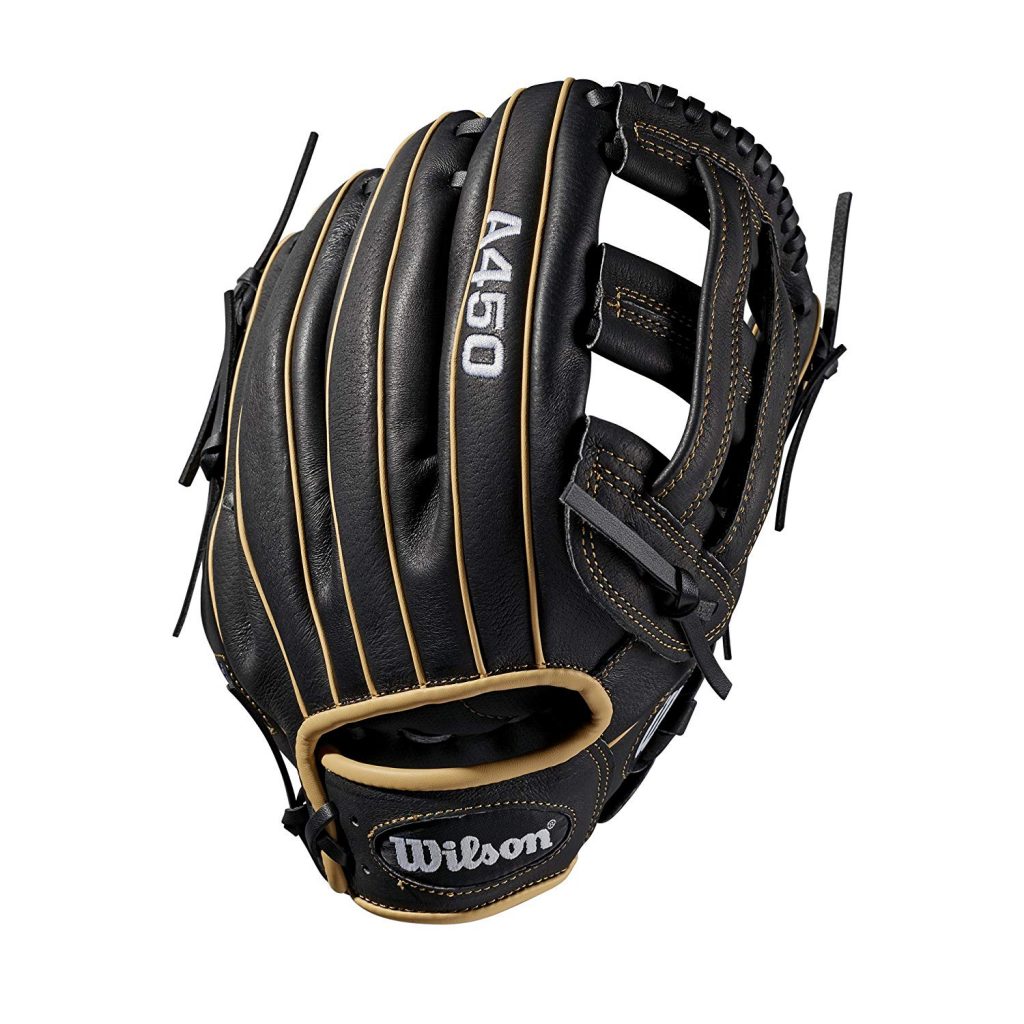
Make a good impression on your dad with the Wilson A450 Baseball Glove Series. Featuring a dual post web, these gloves are perfect for various types of adult hand sizes. Furthermore, the black and blonde full pigskin leather material is durable, as well as appealing at the same time. Like fine wine, the feel and performance of these gloves improve over time as you get accustomed to their structure. The gloves also provide exceptional ventilation, thereby improving the comfort of your hands as you play.
The Likes
- Comes with a dual post web material
- Made using black and blonde full pigskin leather
- The gloves are appealing and durable for reliable performance
The Dislikes
- The gloves could use improved ventilation
- The lacing system is somewhat complex for some users
Summing it All Up
Your dad is an essential aspect of your life, and giving them a gift is the best way to show your love. If you are searching for the best gift for dads, the baseball accessories are an excellent place to start. We have narrowed down this list of best baseball gloves to get you going. These gloves are affordable, and they have many dynamic designs to make each baseball playing session fun. Furthermore, the gloves are also comfortable to wear and can provide years of longevity. Thanks to their unique design aesthetics, these gloves also act as excellent souvenirs as well.
Choosing Bus Transportation for Your Little Leaguers
Getting around town with a party bus can be an incomparably entertaining and exceedingly enjoyable experience. However, this doesn’t imply that the same is completely without its fair share of downsides. Subsequently, people considering the prospect of using this transport means ought to thoroughly weigh its pros and cons, especially when kids are involved. As such, this article briefly explores this delicate subject – party bus transportation for your little leaguers (good Idea or bad?). Continue reading to discover some top 5 benefits of bus transportation over other common commuting alternatives.
1. Comparatively Cheaper
Compared to other commutation options, party bus transportation is comparatively cheaper. Party planners always fall short of finances due to the costly nature of nearly all the logistical appropriations involved in arranging a successful celebratory or commemorative event. Due to the obvious expensiveness of almost every single party-holding necessity, deciding to use a bus for a mobile partying spree is an unbeatably affordable trick that will leave both you and your Little Leaguers sufficiently excited and outstandingly gratified.
2. Huge Passenger Capacity
Bus transportation remains a perfectly suitable choice for an event featuring many invitees. In a similar vein, hiring a party bus is a nice step toward including everyone in the mobile merrymaking arrangement since the typical bus can accommodate as many as 40 individuals. Remember the simple fact that the overall pomp and color that characterizes any social get-together lies in the sheer high numbers of the attendees. Therefore, going for party shuttle packages injects an extra measure of rare thrill and unmatched splendor into the whole thing.
3. A Great Way to Impress
Additionally, opting for bus commutation over other mundane means gives you and your little leaguers a great chance to impress other folks out there. Your Little Leaguers will no doubt like the idea of chanting happy and gallant slogans as the large carriage roars past groups of mates and gaming rivals along the highway. This is not even slightly possible with other less impressing transportation methods. Consequently, holding a celebratory party or any such others lively event aboard a bus is an immensely impressive decision that will doubtless leave everyone full of envious admiration.
4. Extraordinary Onboard Amenities
Many modern party bus designs include a slew of matchless onboard amenities that would be unnecessarily costly if paid for separately. For instance, the average bus service package in an uptown locality features some fine accessories such as plasma screens and electronic music devices. Therefore, choosing this wonderful travel choice will treat everyone to a great deal of immeasurable pleasure and fun without incurring any added costs.
5. Inimitable Fun & Impregnable Safety
Finally, party buses help you enjoy yourselves while touring various places around the vicinity. As such, this extremely entertaining option clearly surpasses dozens of other less thrilling transport methods like taxis. On top of the inexhaustible fun bus services offer, the vehicles are always driven by thoroughly qualified and extensively seasoned professionals. As a result, you won’t have to worry about the complex logistics of hiring great drivers. Again, everyone’s safety is fully guaranteed since these specialized drivers stay constantly sober and strictly focused on your preferred cruising paths and partying destinations so long as you fully adhere to all the pre-agreed terms and conditions.
Some resources for bus charters:
http://www.partybusrentals.nyc – New York City Area Party Bus Charters
Building Your Own “Field of Dreams” Baseball Field
 There are many benefits you enjoy after you decide to build your baseball field. It is not a hard task to accomplish, you only need to do enough research and know how the field is created and within no time you can turn your backyard into your dream field. You will need the help of family members or just spend several hours till you have the field in order. There are different items you will need for the building process; you can hire most of the tools you need. You need to prepare the ground and remove all trees which may have been planted in the field. Some of the steps you need to take for you to come up with the best baseball field include the following:
There are many benefits you enjoy after you decide to build your baseball field. It is not a hard task to accomplish, you only need to do enough research and know how the field is created and within no time you can turn your backyard into your dream field. You will need the help of family members or just spend several hours till you have the field in order. There are different items you will need for the building process; you can hire most of the tools you need. You need to prepare the ground and remove all trees which may have been planted in the field. Some of the steps you need to take for you to come up with the best baseball field include the following:
Tree Removal and Land Clearance
You need to remove all trees from your field location. You can start by cutting down the trees before you proceed to uproot the trunks. The task requires the use of special tools. You can visit your local tree removal company from where you can hire the tools. If you have a lot of trees which you require to be removed, you can as well proceed and a hire company which will carry out the tree removal service for you to later concentrate on removing other obstructions from your specific locations. Always take measurements of the field where you will like to have the field before you start removing the trees. This is necessary for you to avoid cutting trees in areas where the baseball field may not extend.
Landscaping and Design
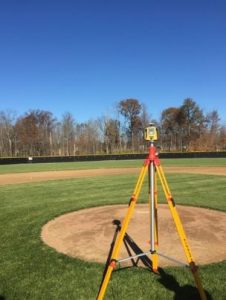 The areas where you will have the baseball field should have good surrounding. You will have a beautiful looking place after you invest in landscaping services. There are different techniques you can employ. You only have to assess the area where you will like to carry out landscaping services from where you will get to know the best strategies you can employ in your landscaping adventure so that you will have a good looking landscape. There are different types of grasses which you can grow depending on the weather conditions. The grass will provide necessary cover for you to enjoy playing baseball.
The areas where you will have the baseball field should have good surrounding. You will have a beautiful looking place after you invest in landscaping services. There are different techniques you can employ. You only have to assess the area where you will like to carry out landscaping services from where you will get to know the best strategies you can employ in your landscaping adventure so that you will have a good looking landscape. There are different types of grasses which you can grow depending on the weather conditions. The grass will provide necessary cover for you to enjoy playing baseball.
Grass maintenance
Grass maintenance is another factor you should take into consideration. You should invest in tools such as lawn mowers so that you can cut the grass at the right level for you to enjoy playing baseball. There are different types of lawn mowers available; it is upon you to choose the best lawn mower which will work well in your given area. You can decide to go for a robotic or tow behind lawn mower which will enable you to maintain the grass at the right level.
Mark the field
The baseball field has dimensions. You should mark your field so that players will know where you start from when playing the game. You can access the measurements of different parameters from experts in the field of baseball, or you can just carry out research online. It is an enjoyable experience for you to build your dream baseball field.
Prepping Your Toddlers for a Life of Play
In our latest edition of “Parent’s Corner” we want to talk a bit about how you can influence your youngest kids into have a life filled with athletic achievements, starting with small instances of “play” in their daily lives. Just a few small adjustments can make your kids outlook on physical activity a whole lot brighter, and avoid the consequences of video games, iPhones and Tablets that are starting to affect a generation.
Some of the simplest changes in the earliest years of a child’s life can have profound impact. So let’s talk about a couple of changes that you can make as a parent to emphasize the importance of athleticism, physical activity and overall physical health for a growing child. Here’s what we came up with:
Frequent Trips to Playgrounds/Backyard Playsets
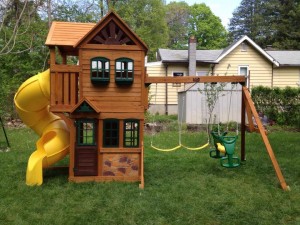 Frequent trips outdoors to playgrounds and parks is probably the most important thing to do for a child (when it comes to promoting physical activity). Having the child expect and desire to go outside for fun, instead of being cooped up indoors and expecting fun to come form of video games, junk food or other means, it crucial in developing good habits and behavior patterns later on in life.
Frequent trips outdoors to playgrounds and parks is probably the most important thing to do for a child (when it comes to promoting physical activity). Having the child expect and desire to go outside for fun, instead of being cooped up indoors and expecting fun to come form of video games, junk food or other means, it crucial in developing good habits and behavior patterns later on in life.
Backyard play is also a huge benefit, if possible. Many of us grew up in the city and we didn’t have backyards, so we didn’t want to presume anything about a given household. For those that do have the benefit of a backyard in their home, this can save a bunch of time for the parent (as well as mileage on the car), as they don’t have to go the playground as frequently.
The presence of a backyard swing set, play set, or other apparatus that will encourage outdoor play is another big benefit. Without these the backyard can start to lose appeal to a child, even if it’s is beautiful for sitting and enjoying the weather (as adults prefer). Consider a swing set installation as a long term investment which can pay off big (this is especially true with families with more than one child, where the investment will continue to pay off for many years).
Early Youth Sports Initiatives
It’s also very important to get started with organized youth sports as soon as possible. T-Ball is played as young as 5 years old, and can be a great way to get kids active in a team environment, early on. Some other great youth sports include:
Gymnastics
Soccer
Handball
Basketball
In general, any youth sport activity that you can find will be a good one. Eventually interests will start to converge on a given one or two sports, which is fine. The important part is to give the child enough of a choice and enough exposure to make a decision. Without the exposure to the idfferent environments, a child won’t know what is is they like to do.
In Absence of a Organized Program, Set Regular Plans
Different areas may or may not have organized sports for young children. In addition, the price may be prohibitive for some families, which shouldn’t be a death blow to athletics. As the body builder Mike Rashid says, “The Earth is Our Gym”, in the same sense “Our Neighborhood is our Field”, we can play anywhere, anytime.
So set up regular times to enjoy sports activities with your kids, include simply a game of catch (the quintessential American activity), basketball in the driveway or at a park, jogging, running or other physical activities. Make them a regular thing (such as every Sunday night), so it becomes both enjoyable and expected by the child.
Following these simple rules will give your kids a big advantage later in life, when physical activity and good habits become much more important. We hope you’ve found this useful!
Tree Removal for Baseball Field Construction
Anyone who grew up with “Field of Dreams” as one of their favorite movies will know the nostalgia that comes with a good old fashioned game of baseball. Whats more, the dream of having your very own field in your backyard is something that most people consider to be too lofty of a goal. However if you are really serious about getting a field on your own property, it’s quite possible. It’s not even as complex as a basketball court or tennis court, since a baseball field is made of just dirt and grass. However there are a few tricks to be considered before taking on the project, namely the issues of trees and tree removal.
Having the Land for your own “Field of Dreams”
The first step is to have your own land, and enough of it to make fitting a moderately sized baseball field is reasonable option. Many people in rural areas of the country have plenty of land to go around, but it’s likely filled with rocks, trees and other obstacles to a smooth, neat, baseball field. So here is where we need to get creative. Consider laying out a plan to remove a set amount of trees (we did this using a local company, Tree Removal Long Island, and they did a terrific job.)
Make this plan and then consider the ramifications of it on your property. Will you have to de-forest you entire land to fit it in? Do an early “feasibility check” on the plan to make sure it isn’t preposterous, and then continue on.
Measuring Our Your Boundaries
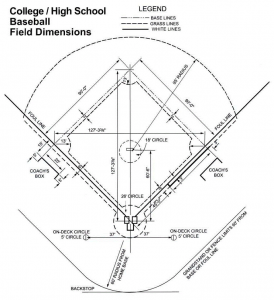
Knowing the dimensions of a field will help you to determine what type of clearance you will need, include tree removals or other services.
Professional baseball fields (those without trees, rocks and uneven ground) can stretch for 400 feet or more into dead center field. You certainly don’t need all this space, but you also don’t want to coupe yourself up into a small area. Consider making a 300x300ft section and have it reserved for the field. You can take a look at some diagrams, available online, for how to make best use of the land you have. We’ve pulled a diagram which outlines the Youth/High School baseball field dimensions. This should give you a great idea of what time of land clearance, tree removal or other services you will need to make you field of dreams a reality.
Making a Field of Reality from Your Field of Dreams
The next step is to take some action to turn your plans into reality. You’ve got a general idea of how big the field will need to be, so now you need to clear land. Consult tree specialists and land specialists to get an idea of how much it will cost you to clear the requried amount of land.
Next you will need to get an idea of how much the actual constuction will cost. In addition to the tree removal you may need a dumpster rental to handle extra debris and soil. It’s likely that it won’t cost much because it’s simply dirt and grass, however as my little league coach used to say: “This aint Yankee Stadium” (he was referring to the holes and rocks that would make fielding ground balls a pain in the neck). You will likely run into the same issues, but don’t fear, you will still have one hell of a baseball field to call your own.
Resources:
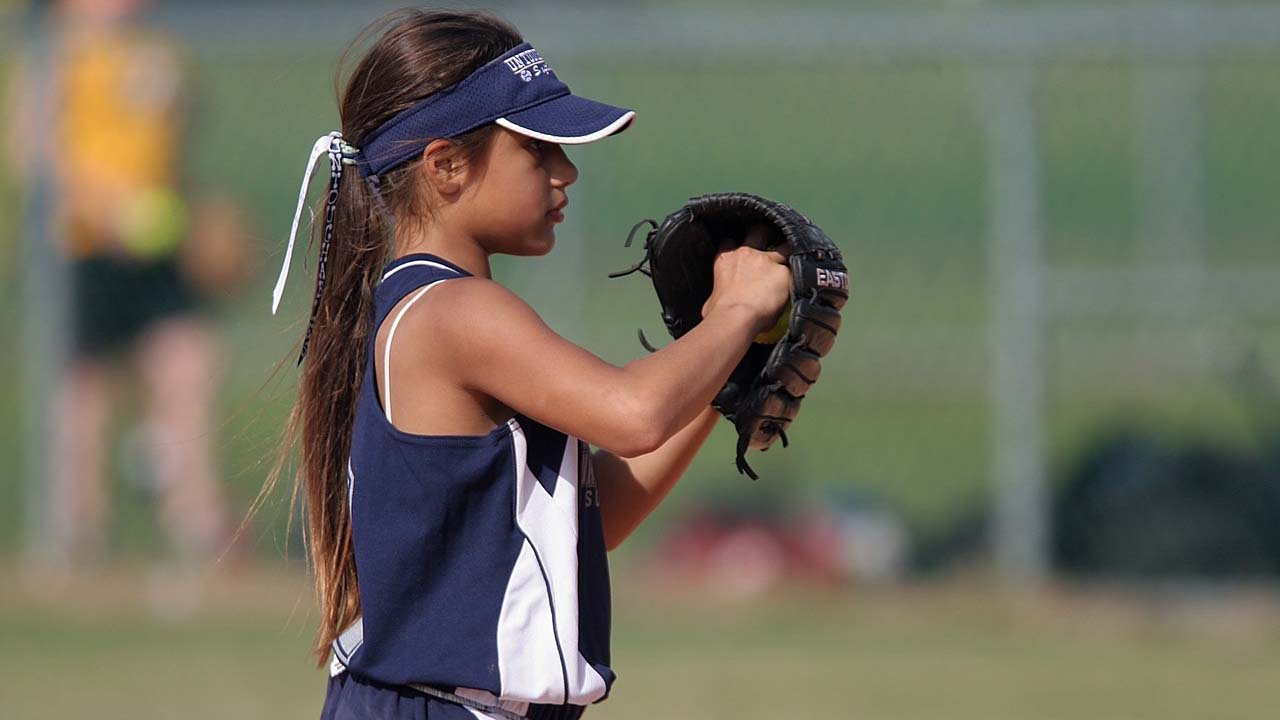
Youth Baseball Pitcher Tips For Coaches And Players
As our long winter begins up north, my coaching buddies and I where talking about youth baseball pitchers along with some tips we all have used in baseball. I hope you may find some help in the following article.
Every kid wants to pitch in baseball it seems. Pitchers are learning how to throw pitches and are the center of the game. Young pitchers set the pace of the little league game. Young pitchers feel great when they strike out the No. 3 hitter in the lineup. They float to the dugout when after a one, two, three inning. They don’t have to run off the field like everybody else. The baseball pitcher gets walk off after the third out. It is a rewarding position to play in baseball. It can also be very humbling when you lose the strike zone, start getting hit, or your defense has trouble helping you out. The worst part is when you have to be taken out of the game or off the pitcher’s mound.
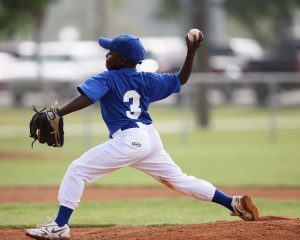 Pitching is much more than just throwing the baseball past hitters. The top three rules for baseball pitchers are as old as baseball itself. Location, location location. At eight or nine years old you can get away most of time with just throwing heat past hitters. As you get older however, off unless you learn how to change speeds, and change location, hitters will begin to hit your fastball.
Pitching is much more than just throwing the baseball past hitters. The top three rules for baseball pitchers are as old as baseball itself. Location, location location. At eight or nine years old you can get away most of time with just throwing heat past hitters. As you get older however, off unless you learn how to change speeds, and change location, hitters will begin to hit your fastball.
Young pitchers who are top youth baseball pitchers at 8 years old sometimes aren’t even pitching at 11 years old for of a variety of reasons. Some of these reasons we will cover in later articles. The sooner the young baseball pitcher learns the necessity of changing speeds and location the sooner they will improve as a pitcher. Baseball pitchers 8-11 will have a wide variety of throwing motions. As a coach you need to present options to your young pitchers. Little league coaches should stress a compact wind up with as little unneeded movement as possible.You are not reinventing the wheel here. Please stress balance first to your pitchers. Arm position, rotation of the hips and balanced controlled follow-through are also recommended.
Pitch counts and no breaking balls of any kind are also strong recommendations. Youth baseball pitchers can begin to be introduced to breaking pitches around puberty is the view of some baseball coaches. Change ups will more than suffice until then. You can do a great deal of long term damage to your young athlete’s arms by number one, not getting into a warm-up routine early in the career. Learning how to throw baseball pitches is a process, not an event. It’s the habit that needs to be instilled early on by baseball coaches. At 8 years old they may not physically need to have a half-hour warm up routine. At 13 they do, so if it is not ingrained by then, all it takes is one incident to hurt the young pitcher’s arm.
Pitch counts. Please abide by the recommended youth pitch counts per age group. We’re talking long term here. It is your responsibility as a baseball coach to protect your players. It also teaches young pitchers a lesson or two. It teaches them to use pitches wisely if you want to go deep into the game. Young pitchers should learn get batters out by using location not just heat. Seven pitch innings using your fielders, keeps everybody in the game. It also keeps the pitch count lower and pitchers stay in the game longer. I know the younger age groups may have inning limits, it is still never too early to instill these basics. Youth baseball is too great of a sport not to give our young players the right instruction.
Thanks for your time,
Coach Chip
Hello My name is Chip Lemin. I’m a long time youth baseball coach who loves to promote this great game of youth baseball. Promoting sportsmanship in this game of youth baseball is something that really needs I feel. I have a free e-course that will give you some solid coaching information along with great help on the inter-personal relationships we must have to be good youth baseball coaches. Things such as parents, travel baseball, getting parents to help out, how to communicate better to parents and players, just to touch on a few. This course will help to organize practices like an elite coach. How to motivate players and other coaches with your positive attitude. It really is not very hard to be a great coach when you know what to do.Best of all you will learn how to have fun with these great kids that you have the privilege of coaching. Do yourself a favor and check it out, it’s free,you will get 1 part every couple of days in your e-mail. Coaching can be fun and rewarding if you have a plan in place first, and you have an idea what you are doing. http://www.baseballecourse.com
The Fence Drill – A Good Baseball Hitting Drill That Provides Immediate Feedback
If you are looking for a simple hitting drill for your youth baseball players to use at practice and at home, the fence drill is one of your drills. When done correctly, the fence drill develops a compact swing, bat speed and also teaches the hitter to attack the inside part of the baseball.
Attacking the inside part of the baseball is a very important skill to teach your players. By hitting the inside part of the ball, the player will be able to hit the ball to all fields. If the hitter keeps his hands inside the baseball, the hitter has an advantage over the pitcher because he has the ability to hit the ball to all fields hard.
On the flip side, if your player doesn’t attack the inside part of the baseball, he becomes a dead-pull hitter. The pitcher has a huge advantage if the batter is a pull hitter because anything on the outside part of the plate becomes very difficult for the batter to hit hard.
Equipment Needed For the Fence Drill:
- Wall, net or fence
- Baseball Bat
Fence Drill Instructions:
- Assume correct batting stance while facing a fence
- Hitter should be a bat distance away from the fence
- Take a normal stride straight at the imaginary pitcher
- Swing the bat while visualizing attacking the inside part of the ball
- Freeze the finish with his head directly over his belly button (shows balance and control)
If the ballplayer does this drill correctly, he will take his normal stride followed by his normal swing and his bat will not hit the fence. If the bat hits the fence, he did not attack the inside part of the baseball and his swing is too long. Encourage him to use a more compact swing and tell him to visualize hitting the inside part of the ball. All hitters should be able to consistently swing the bat during the fence drill without hitting the fence.
NOTE: As with most baseball drills, it is important to begin with qualified coaches/parents watching and giving feedback to the youth player. As time goes on and the player gets better with the fence drill, he will be able to do this drill on his own and get immediate feedback.
How to Play Third Base (the Right Way)
This article – How to Play Third Base (the Right Way) – is part of our “How to Play” series aimed at helping youth league coaches properly instruct their players on the fundamentals of each position. The third baseman is usually a quality fielder with quick hands and a powerful arm. Manning the “hot corner” takes a fearless player, as well as a player who can think on his feet.
Requirements for the Third Baseman
Your third baseman must be quick on his feet, and possess excellent reflexes. While he can of course benefit from raw speed, it is not an essential requiremnt for the position. Third base requires a very solid glove – most batters are right handed, and many of them love to pull the baseball. This means that third base gets many hits, and the fielder’s positon places him very close to the batter, leaving less reaction time than most other positions enjoy. The third baseman mus have a strong arm if he is to have any chance of throwing out a runner at first base, so he will frequently possess one of the strongest arms on the team.
Basic Responsibilities
On any contact, the first step should be toward the ball. The player’s momentum will carry him either to the ball, or toward his base.
The exreme left side of the infield is the third baseman’s responsibility domain – anything hit between the shortstop and the left foul line is his responsibility. If he can get to the ball, he should do so. He should be prepared to cover third base if there is any possibility of a play there.
If the ball is hit between second base and the right foul line, the player should always cover third base, in the event of a throw there. He should be aware of what is going on with the shortstop; if a throw is made to second base fromt he right side fo teh outfield, he should back up the play.
Advanced Reponsibilities
With a runner on first and less than two outs, the top priority should always be to attempt a double play. If possible, make a clean throw to the second baseman in an effort to “turn two.” However, the player should always bear in mind that the first responsibility is a sure out – make the throw to first if he does not think he has a chance to get the runner at second.
If there is a force play at third (runners on first and second), the first option is usually to step on thrid base to begin a double play – either to second or first, depending on the judgement of where the best chance for an out is. Preference is always given to the lead runner – that is, if it is possible to get the lead runner out (at third or at second), then do so before geting the runner at first.
With the base loaded and two outs, the third baseman may pursue whatever out is easiest to get – this may be stepping on his own base, or making a throw to any base. With less than two outs, the call may be for a double play, unless the coach has decided that runs cannot be sacrificed (tie game late). In this case, the only priority is to attempt to force the runner at the plate.
In the event of a bunt, the third baseman will be charging the ball, leaving third base vacant. Usually, the only play here is to throw the runner out at first unless you are dealing with very slow runners at other bases.
Third base requires a smart, heads-up player with great hands, great reflexes, and a strong arm. Even more, thrid base requires a coach who understand the variety of requirements, and can convery them to his players.
How to Play Second Base (the Right Way)
This article – How to Play Second Base (the Right Way) – is part of our “How to Play” series aimed at helping youth league coaches properly instruct their players on the fundamentals of each position. Many times, coaches will place their best players on the field and simply let them do what instinctively comes, sometimes even coaching other players to stay out of the way of the stars.
This kind of coching does a huge disservice to the team as a whole and even to the star players themselves, who tend to develop very bad habits because of this. Never underestimate the power of a well-coached team – time and time again, at every level of competition, we see that teams who function as a team outperform those who do not, even when the opposition supposedly has more talent or ability.
Of course, in order to properly prepare the team, you must understand each position!
Requirements for the Second Baseman
Your second baseman must be mobile and quick on his feet. While raw speed is not an absolute requirement, the faster he is, the more range he has; among infielders, only the shortstop has more need of speed. Naturally, your second baseman must have a solid glove, as must all of your infielders. Second basemen are rarely required to make throws anywhere but to first base or to the shortstop; therefore, arm strength is not a concern as it is at third or short. Above all, a second baseman must be able to make decisions and think on his feet, as he has many responsibilities.
Basic Responsibilities
On any contact, the first step should be toward the ball. The player’s momentum will carry him either to the ball, or toward his base.
The right side of the infield is the second baseman’s domain – anything hit between second base and the right foul line is his responsibility. If he can get to the ball, he should do so. If the ball is hit to the first baseman, it is his job to back up the play. If the ball gets into the outfield, he should sprint out onto the grass and act as a cutoff man.
If the ball is hit between second base and the left foul line, the player should always cover the bag in the event of a throw from short or third. If the ball goes into the outfield, he should be prepared to receive a throw at the bag.
It is vital that the second baseman and the shortstop communicate and clearly understand when each will be covering the base! If they get into one another’s way, outs will be lost.
Advanced Reponsibilities
With a runner on first and less than two outs, the top priority should always be to attempt a double play. If fielded near the bag, the player should know whether to step on the bag himself or to make the throw to second base via the underhand toss. However, the player should always bear in mind that the first responsibility is a sure out – make the throw to first if he does not think he hs a chance to get the runner at second.
In the event of a bunt, the shortstop will be covering third base, where the third baseman will be charging the ball. This leaves second wide open, meaning that the second baseman must cover the bag at second.
If a runner attempts to steal second, both the shortstop and second baseman should break for the bag. Usually, the shortstop will cover the base, while the second baseman will back up the play a good ten feet deep. However, if the shortstop does not make it (for whatever reason), the second baseman *must* take the bag.
Second base is absolutely vital, and should be filled by one of the best defensive players on your team. If coached correctly, it can be a keystone of your defensive effort.
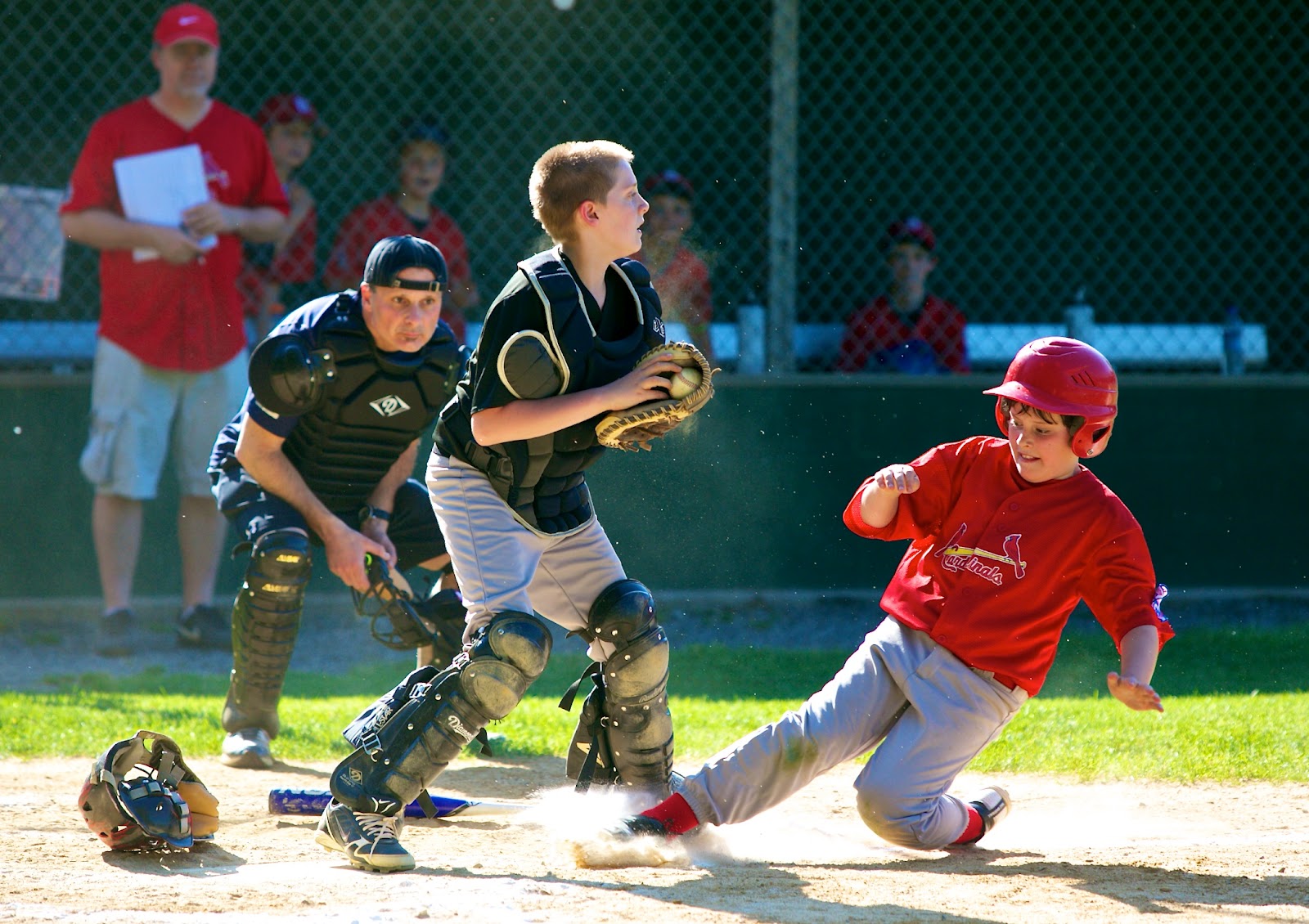
So, You Want to Coach Little League?
You have never coached in your life, and you have volunteered/been nominated/been conscripted to do so. Relax! The fact that you are here, looking for help, puts you ahead of ninety-five percent of potential youth baseball coaches. Rather than focus on specific drills or practice methods (you can find those everywhere), we will focus on concepts and other tips born of experience.
Odds are, you’ll have a list of players and telephone numbers provided by your league. The first thing you’ll need to do is to call all of your parents and introduce yourself. Call a team meeting within the next couple of days, at a time of day that will be similar to your practice times. It’s a great idea to ask to speak to the player themselves – two minutes of talking to the coach on the phone can really fire up a player’s enthusiasm.
At your first meeting, shake everyone’s hand and introduce yourself. Spend five or ten minutes explaining your expectations and general rules for the season, then take your players aside.
What, you don’t have any rules or expectations? You really should try to clarify these before you ever meet your team. Different coaches do things different ways, but the following are suggested:
1. Players should attend every practice unless they are ill or have another legitimate reson (school function, illness, etc.). Your team will only hae so many practices over the course of a season, and even at the coach pitch level, they are all important.
2. Players should exhibit respect for the coaching staff, the umpires, and one another. Bad attitudes will not be tolerated. Explain clearly that bad attitudes will result in discipline such as laps, pushups, reduced playing time, etc – and stick to this. Sit your star shortstop if he spends his life making his teammates miserable. You’ll have the respect of your players, have a happier team, and possibly teach the young man a valuable life lesson.
3. Once they step on the field, players are expected to pay attention! My daughter had a outstanding coach in her first two years of softball – the man seemed to always coach the first place team, despite having less talent, year in and year out. He once told me that holding the attention of his players was the key. “On a team of twelve kids,” he’d say, “I’ll have nine that can hit, eight that can field, and three can can pay attention.”
4. Related to number three, players are always expected to put in their best effort. Let them know that they can strike out, they can miss balls, they can make mistakes… as long as they are trying their best. Baseball will be fun, but it is not playtime. Players and parents alike should understand that, as a team sport, baseball requires players to rely on one another. If someone is goofing off, they hurt everyone on the team. We all understand that the team is comprised of kids, but that doesn’t mean they are free from expectations. You expect them to do their part and to put effort into games and prctices.
5. Parents should be free to discuss their concerns with you (and don’t worry, they will!) – but only after practice, after games, or with a call to your home. Never, ever have a confrontation about little Johnny’s playing time during a practice!
Field any questions your parents may have, then take your team aside. Pull them into a huddle, and speak quietly to them. Tell them that you are excited about the season (you are, aren’t you?), that you are glad to have each of them on your team. Tell them that you will win some games, you will probably lose some games, but you will have a lot of fun, look great in custom baseball uniforms, and you will learn some baseball. Ask them who has played before, and who has not, but don’t concern yourself too much with their answers at this point – you are establishing communication with them by getting them to talk to you away from mom and dad. You’ll use your first real practice to evaluate skill and ability, not the fact that Billy has played t-ball but Scott has not. End your huddle with a nice “Go Team!” or something similar.
If your league has not assigned assistant coaches and/or a team mom, you need to recruit these now. Check your league guidelines for the number of assistants you are allowed (can be as few as one, can be as many as four – depends on the age group and the league), but try to not turn away any parent who wants to help. Just because you may only be able to keep x number of coaches on the field during games does NOT mean you can’t use parental help in practices – use them to help you run practice stations, shag balls, coach bases, etc.
Do not underestiate the value of a good team mom. I repeat, do NOT underestimate the value of a good team mom. Having someone willing to call all of the parents for you during the course of the season to announce practice times, to set up pizza parties and trips to McDonalds, to coordinate who brings after practice drinks and/or snacks… these things are invaluable to team morale and to keeping your sanity.
On that note, don’t neglect the after game McDonald’s trip or the occasonal post-practice water gun fight. Baseball is and should be the focus, but remember that these are kids, and a little fun goes a long way with them. We’ve had good years and bad years with my children’s teams, and these tend to correlate directly with the amount of extra effort the coaches were willing to give.
How to Select a Proper Youth Baseball Bat
Possibly the most important choice your player will make prior to any given season is on what bat to use. There are a host of different choices out there, ranging from inexpensive ($20-$30) to extremely pricey ($250+). You’ll need to decide what sort of price range you have prior to shopping for bats, so that you can really compare “Apples to apples”.
The point of the baseball bat is, of course, to allow the player to focus as much power as possible upon the baseball. While this may sound simplistic, it does lead us to the guiding principle behind selecting a bat – a player should swing the heaviest bat he possibly can without sacrificing any of his batspeed.
Batspeed is the number one creator of power in a swing. Of course, the laws of physics tell us that if you can swing a heavier bat with the same velocity as a lighter one, you will produce more power – energy equals mass times acceleration, after all!
Length, weight, and drop
There are three major standards that apply to every baseball bat. The first is length, measured in inches. The second is weight, measured in ounces. The last is drop, which is figured by subtracting the weight of the bat from it’s length. If a bat is, say, thrity incehs long and weighs twenty-three ounces, it is said to have a “minus seven” drop, due to the fact that it wieghs seven ounces less than the length in inches.
Wood or aluminum?
The real question here is aluminum or aluminum. No, that is not a typo – there is really no place for wooden bats in youth baseball these days. A wooden bat has no hope of being as light as its aluminum counterpart, even if that counterpart is made of “cheap” material. Consequently, the player will not be aleto swing as hard, nor generate as much batspeed. Wooden bats simply cannot produce as much power as aluminum. Wooden bats are fantastic for nostalgia, and are the equalizer at the professional level, but your child needs to be swinging metal – in fact, most leagues require that bats be aluminum.
CU-31? CU666? SC-900? ST+20?
What the heck do all of these mean?
These are various designations representing the alloy used in the construction on the bat. Generally, the more expensive alloys allow for more “jump” off of contat, resulting is measurable gains in distance from hitting. Yes, youth baseball technology has caght up with golf – you can literlly buy yourself additional distance on your hits.
Of course, this comes at a sometimes expensive price tag. Baseball bats only have so many “good hits” in them before they become dead. Avoid hitting in extreme cold, or hitting non-regulation baseballs, as you can damage your bat and void your warranty. Realize, too, that your child may grow enough that they may only get one season out of a bat, regardless of how well you care for it. Keep these factors in mind as you weigh price versus performance.
But what size bat should I purchase?
You should determine the correct length of your player’s bat first, then take a look at wight and drop. Larger drops (and thus, lighter wieghts) are usually preferred, as the player can generate more batspeed with a lighter bat. I have time and again seen as little as two ounces make a huge difference in a well dressed young player’s swing!
At the bottom of this article is a chart containing suggested bat lenghts and weights, but this is a guideline only. Some players prefer to choke up on the bat, allowing them to purchase a longer model. Some players are simply stronger than others, and can handle a larger bat more easily than simialrly-sized children.
An excellent test is to have your player hold the bat by its handle, then stretch his arms out so that his body makes a lopsided “t” shape (lopsided because the bat makes one arm much longer than the other). If he cannot hold the bat level with his shoulder for at least a count of ten, the bat is too heavy for him.
| Determine Your Bat Length by Weight and Height | |||||||||||
| height | 3′-3’4″ | 3’5″-3’9″ | 3’10”-4′ | 4’1″-4’4″ | 4’5″-4’8″ | 4’9″-5′ | 5’1″-5’4″ | 5’5″-5’8″ | 5’9″-6′ | 6’1″+ | |
| weight | Bat length | ||||||||||
| 60 | 26″ | 27″ | 28″ | 29″ | 29″ | ||||||
| 61-70 | 27″ | 27″ | 28″ | 29″ | 30″ | 30″ | |||||
| 71-80 | 28″ | 28″ | 29″ | 31″ | |||||||
| 81-90 | 28″ | 29″ | 29″ | 30″ | 30″ | 31″ | 32″ | ||||
| 91-100 | 28″ | 29″ | 30″ | 30″ | 31″ | 31″ | 32″ | ||||
| 101-110 | 29″ | 29″ | 30″ | 30″ | 31″ | 31″ | 32″ | ||||
| 111-120 | 29″ | 29″ | 30″ | 30″ | 31″ | 31″ | 32″ | ||||
| 121-130 | 29″ | 29″ | 30″ | 30″ | 31″ | 32″ | 33″ | 33″ | |||
| 131-140 | 29″ | 30″ | 30″ | 31″ | 31″ | 32″ | 33″ | 33″ | |||
| 141-150 | 30″ | 30″ | 31″ | 31″ | 32″ | 33″ | 33″ | ||||
| 151-160 | 30″ | 31″ | 31″ | 32″ | 32″ | 33″ | 33″ | 33″ | |||
| 161-170 | 31″ | 31″ | 32″ | 32″ | 33″ | 33″ | 34″ | ||||
| 171-180 | 32″ | 33″ | 33″ | 34″ | 34″ | ||||||
| 180+ | 33″ | 33″ | 34″ | 34″ | |||||||
